A small backyard doesn't mean you have to compromise on style, function, or beauty. With thoughtful planning and creative design choices, even the tiniest outdoor space can become a stunning retreat that enhances your daily life and increases your home's value. Whether you're working with a narrow patio, a compact courtyard, or a small patch of grass, the key lies in maximizing every square foot while creating zones that serve multiple purposes. From vertical gardens that climb toward the sky to cozy fire pit areas that extend your outdoor season, small backyards offer unique opportunities to create intimate, personalized spaces that larger yards sometimes lack. The secret is thinking creatively about layout, choosing plants and materials that work hard for their space, and incorporating elements that make your outdoor area feel like a natural extension of your home.
1. Vertical Container Gardens
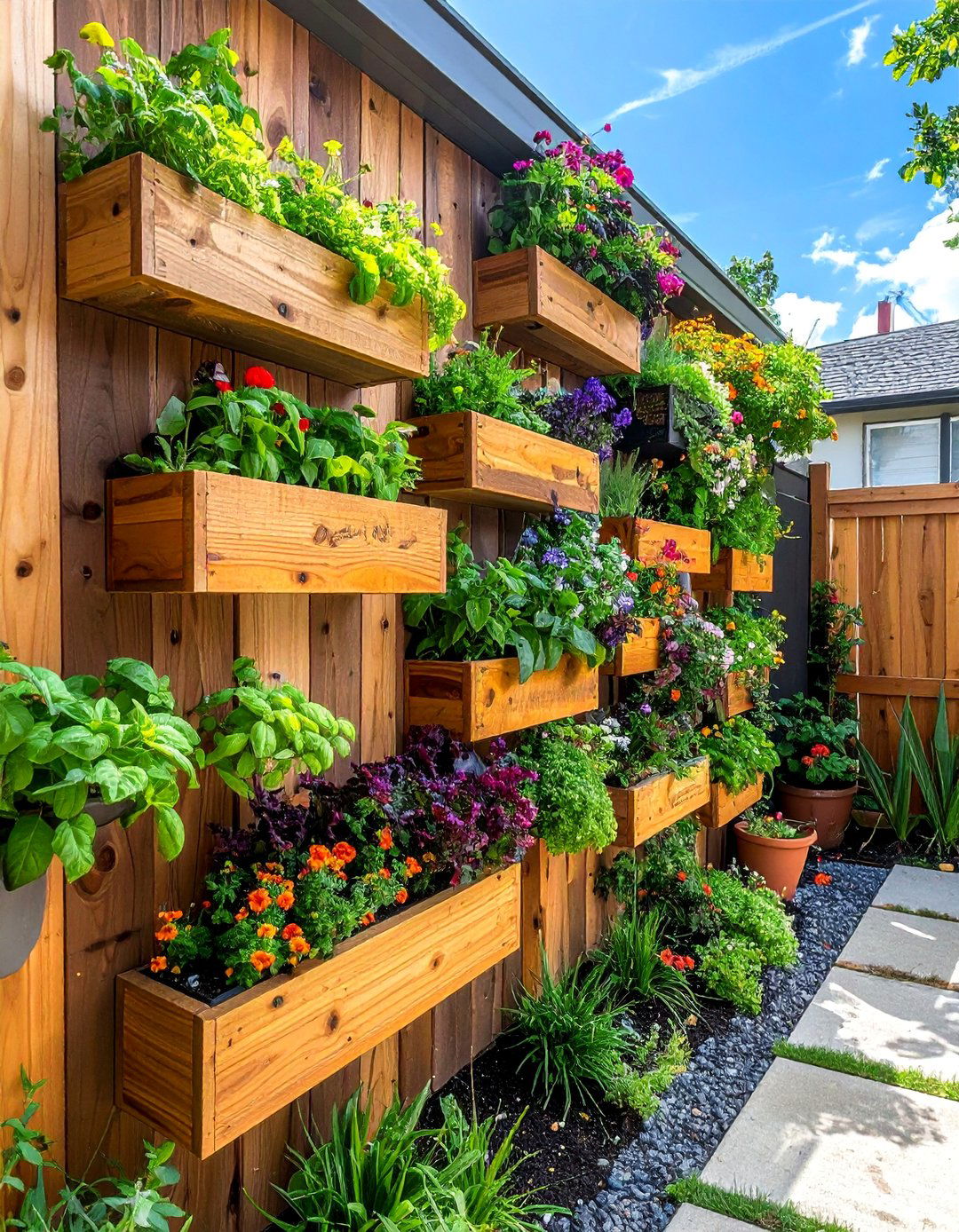
Transform any wall or fence into a living masterpiece with vertical container gardens that maximize growing space while adding vibrant color and texture. This approach works perfectly for herbs, vegetables, flowers, and succulents arranged in wall-mounted planters, hanging baskets, or tiered shelving systems. Choose lightweight containers with proper drainage and group plants with similar water and light needs together. The beauty of vertical gardening lies in its flexibility - you can easily rearrange containers seasonally or move them to follow the sun. Mix different sized containers and plant varieties to create visual interest while keeping maintenance simple. A drip irrigation system can make watering effortless, ensuring your vertical garden thrives with minimal daily attention.
2. Fire Pit Gathering Spaces
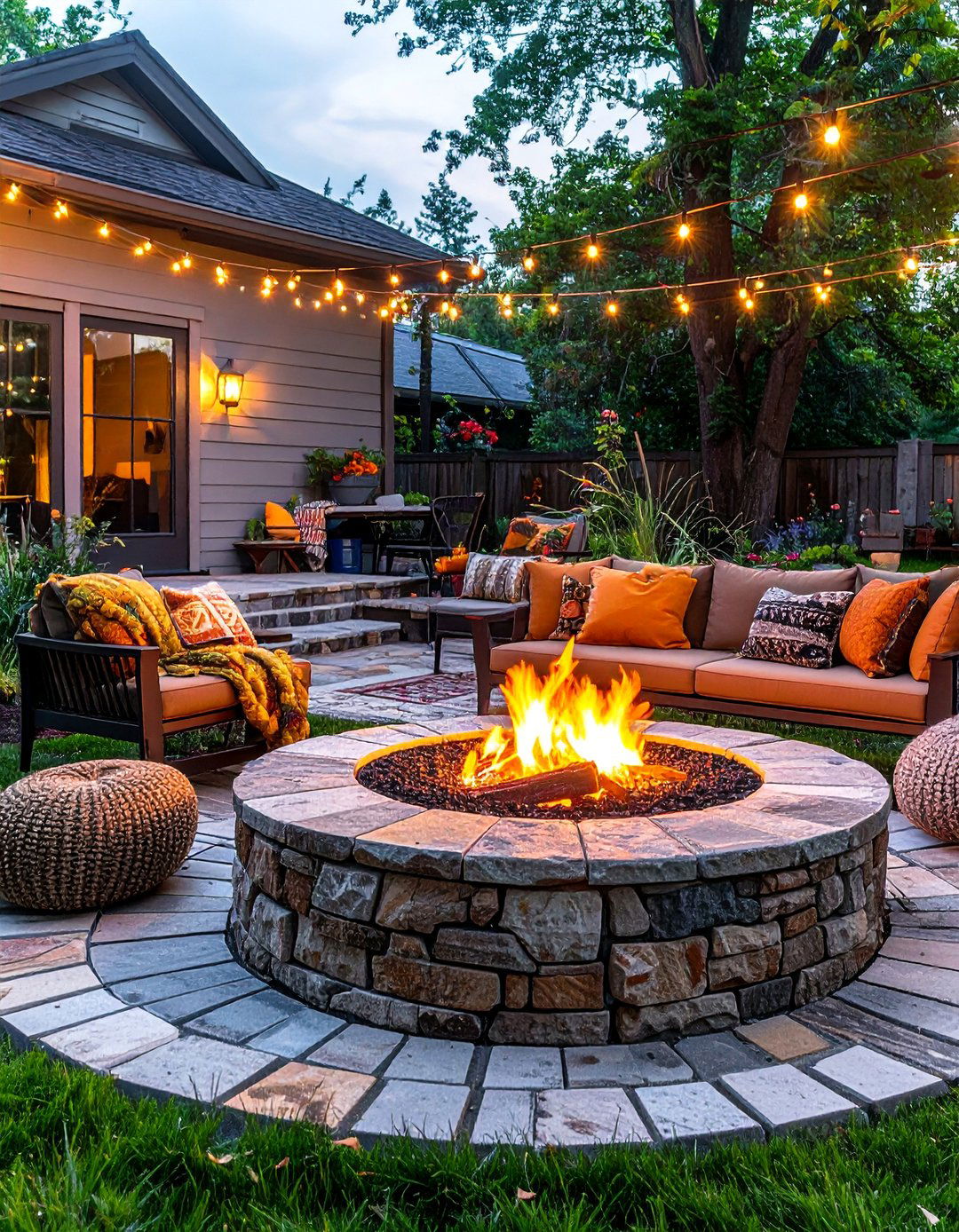
Create a magical focal point that extends your outdoor living season with a well-designed fire pit area surrounded by comfortable seating. Choose between portable fire bowls, built-in stone circles, or modern gas fire tables depending on your space and local regulations. Position seating in a circular arrangement to encourage conversation, using weather-resistant materials like teak, metal, or all-weather wicker. Add outdoor cushions and throw blankets for comfort during cooler evenings. Consider the fire pit's proximity to your home, neighbors, and any overhanging trees for safety. String lights overhead and pathway lighting create ambiance while ensuring safe navigation. Storage benches can hold firewood, blankets, and other essentials while doubling as extra seating.
3. Bistro Dining Nooks
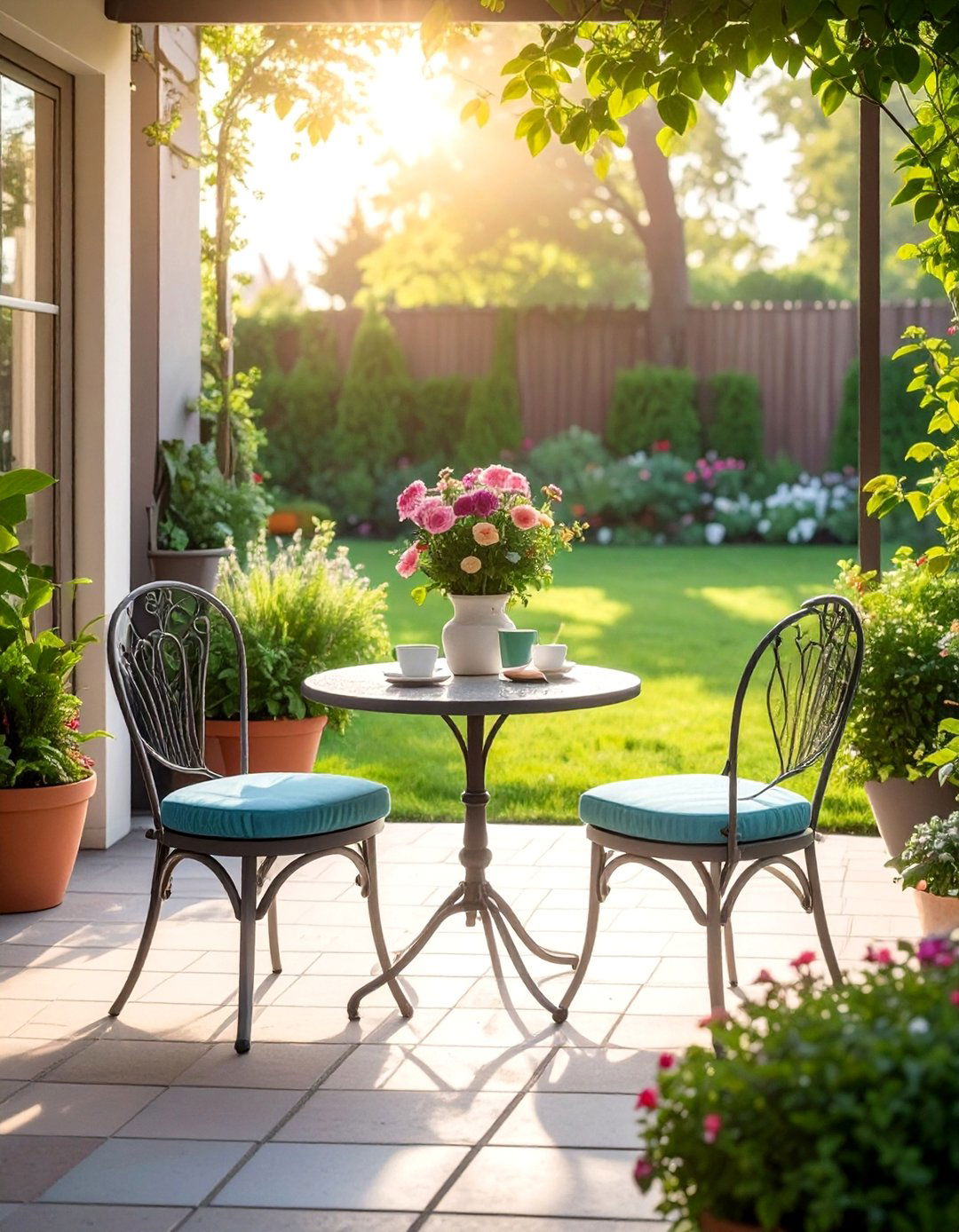
Design an intimate dining space that brings European charm to your backyard with a carefully chosen bistro set positioned in the perfect spot. A small round table with two comfortable chairs creates an ideal setting for morning coffee, casual meals, or romantic dinners under the stars. Look for foldable options that can be stored away when not needed, maximizing flexibility in tight spaces. Position your bistro set to take advantage of morning sun or evening shade, depending on when you'll use it most. Add a small side table for drinks or books, and consider an umbrella for sun protection. Surround the area with potted plants or hanging baskets to create a sense of enclosure and privacy.
4. Raised Garden Beds
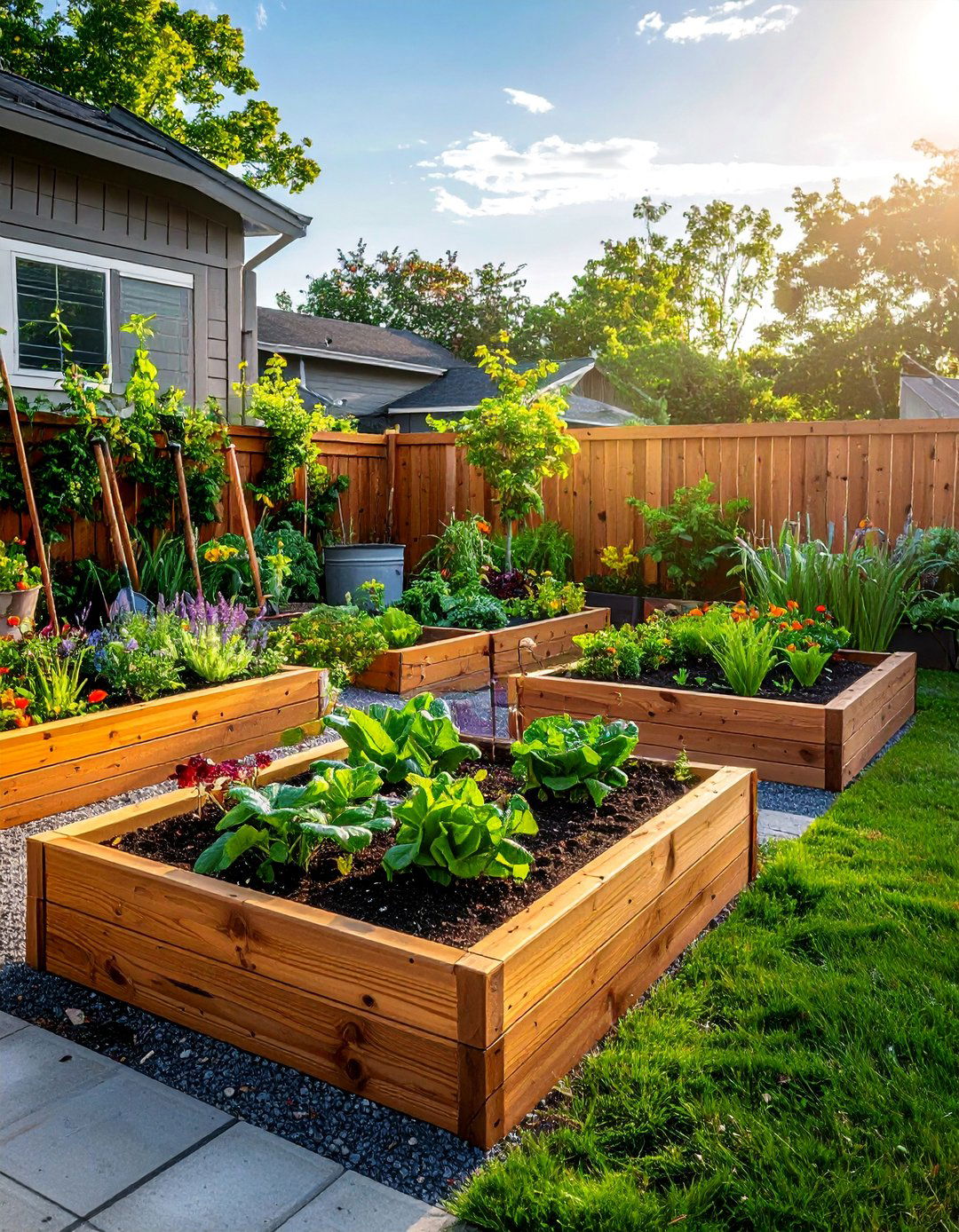
Maximize your growing potential while creating clean, organized planting areas with raised garden beds that work perfectly in small spaces. These elevated planters offer better soil drainage, easier maintenance, and protection from pests while creating defined zones in your backyard. Build beds using cedar, composite materials, or galvanized steel in rectangular or L-shaped configurations that fit your space. Fill with high-quality soil mix and plant a combination of vegetables, herbs, and flowers for both beauty and function. The raised height makes gardening more comfortable and accessible, while the structured appearance adds architectural interest to your outdoor space. Consider adding trellises to some beds for vertical growing of peas, beans, and climbing flowers.
5. Outdoor Kitchen Stations
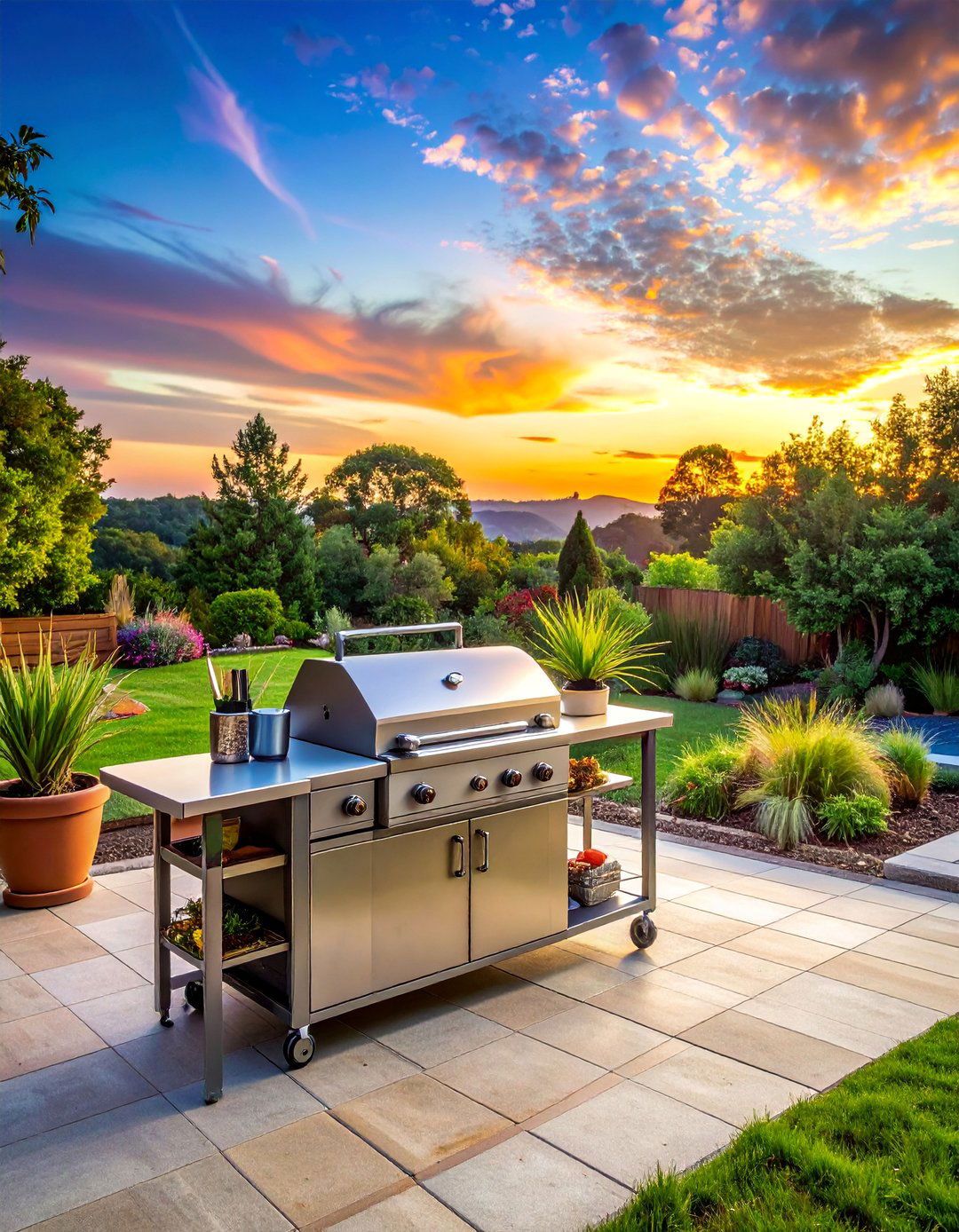
Transform meal preparation into an outdoor adventure with a compact kitchen station that makes entertaining effortless and enjoyable. Even small spaces can accommodate a rolling cart with a portable grill, prep surface, and storage for utensils and seasonings. Position your outdoor kitchen near your indoor kitchen for easy access to supplies, yet far enough to keep cooking smells and heat outside. Include a small refrigerator or cooler, cutting board, and sink if plumbing allows. Weather-resistant storage keeps tools and supplies organized and protected. Add overhead lighting for evening cooking and consider a pergola or umbrella for shade. This setup encourages more outdoor dining and makes your backyard the heart of summer entertaining.
6. Succulent Rock Gardens
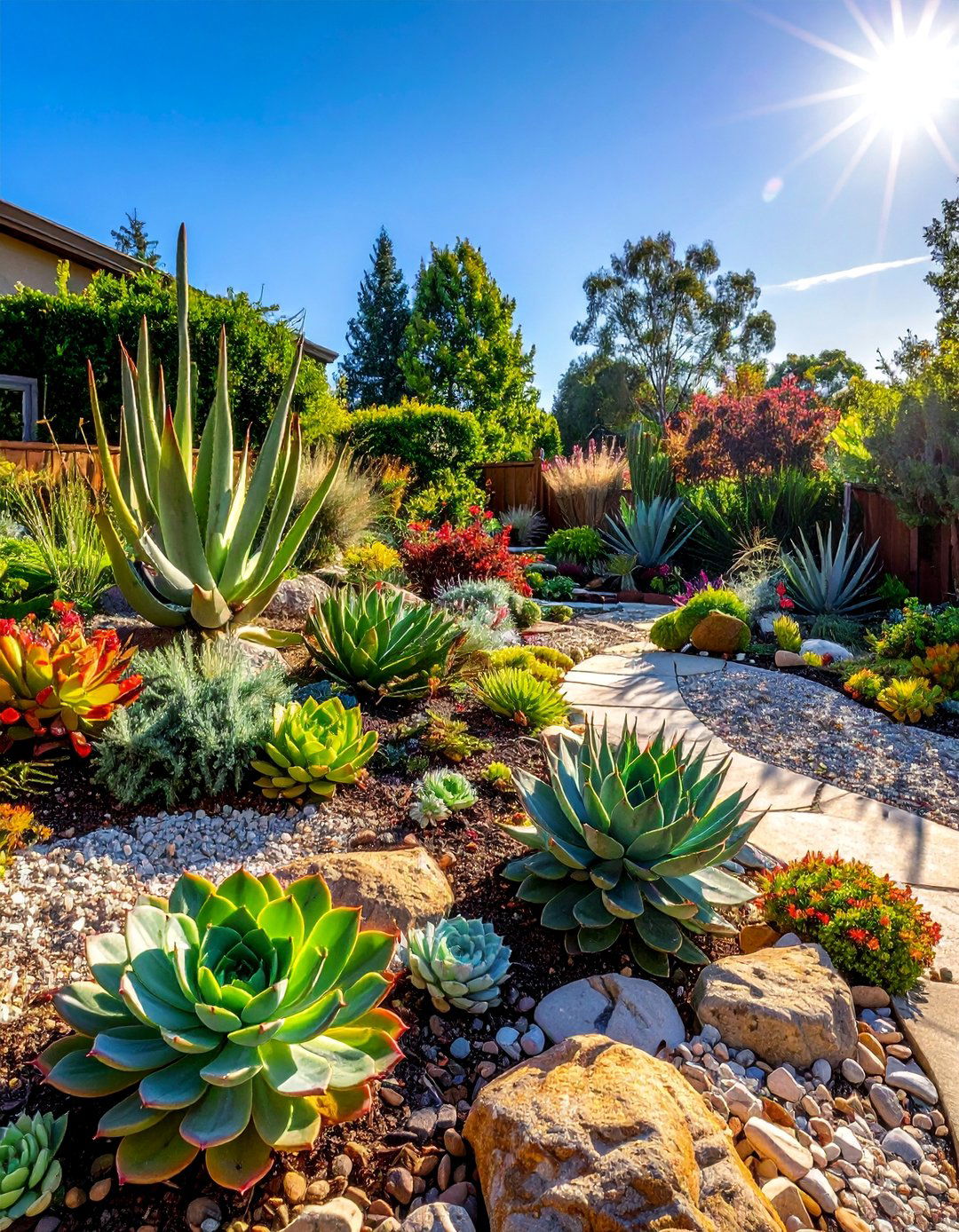
Create a low-maintenance desert oasis that thrives in sunny spots while adding unique texture and sculptural beauty to your small backyard. Combine various succulent varieties with decorative rocks, gravel, and drought-tolerant plants in naturalistic arrangements that require minimal water and care. Choose succulents in different sizes, colors, and shapes - from spiky agaves to trailing sedums - to create visual interest throughout the seasons. Add river rocks, lava rock, or decomposed granite as mulch to help with drainage and create clean lines. This design works particularly well in modern or southwestern-style gardens and can be easily expanded or modified as your collection grows. The low-water requirements make this perfect for busy homeowners or areas with water restrictions.
7. Shade Garden Retreats
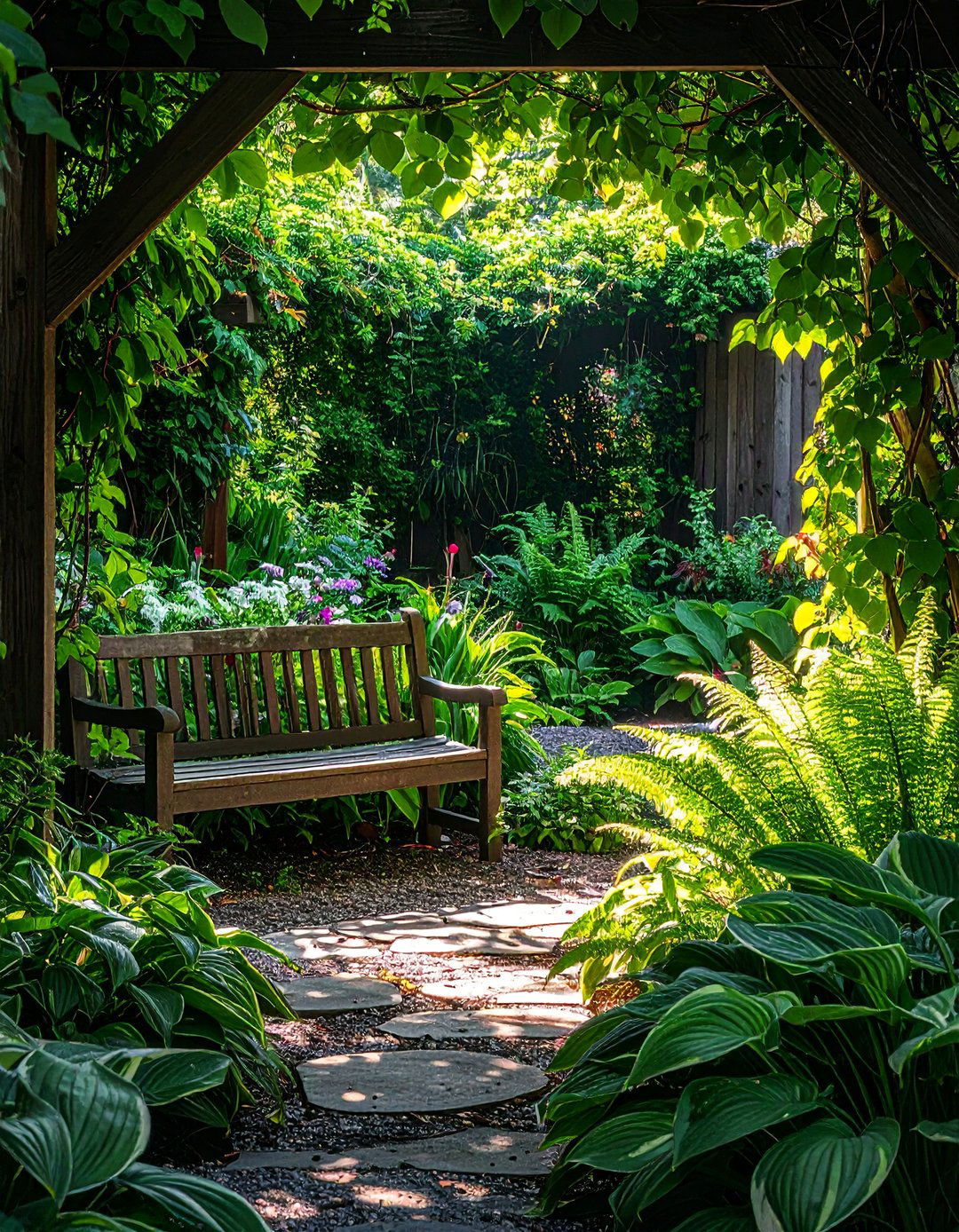
Turn challenging shady areas into cool, peaceful retreats filled with lush foliage plants and delicate flowers that thrive without direct sunlight. Many people struggle with shady spots, but these areas offer opportunities to create serene garden rooms with hostas, ferns, heuchera, and flowering plants like astilbe and caladiums. Layer plants of different heights to create depth, using taller specimens as backdrop plants and shorter ones as ground cover. Add comfortable seating like a garden bench or small table and chairs to create a quiet reading nook or meditation space. Incorporate water features like small fountains for soothing sounds, and use light-colored containers and flowers to brighten darker corners.
8. Container Water Gardens
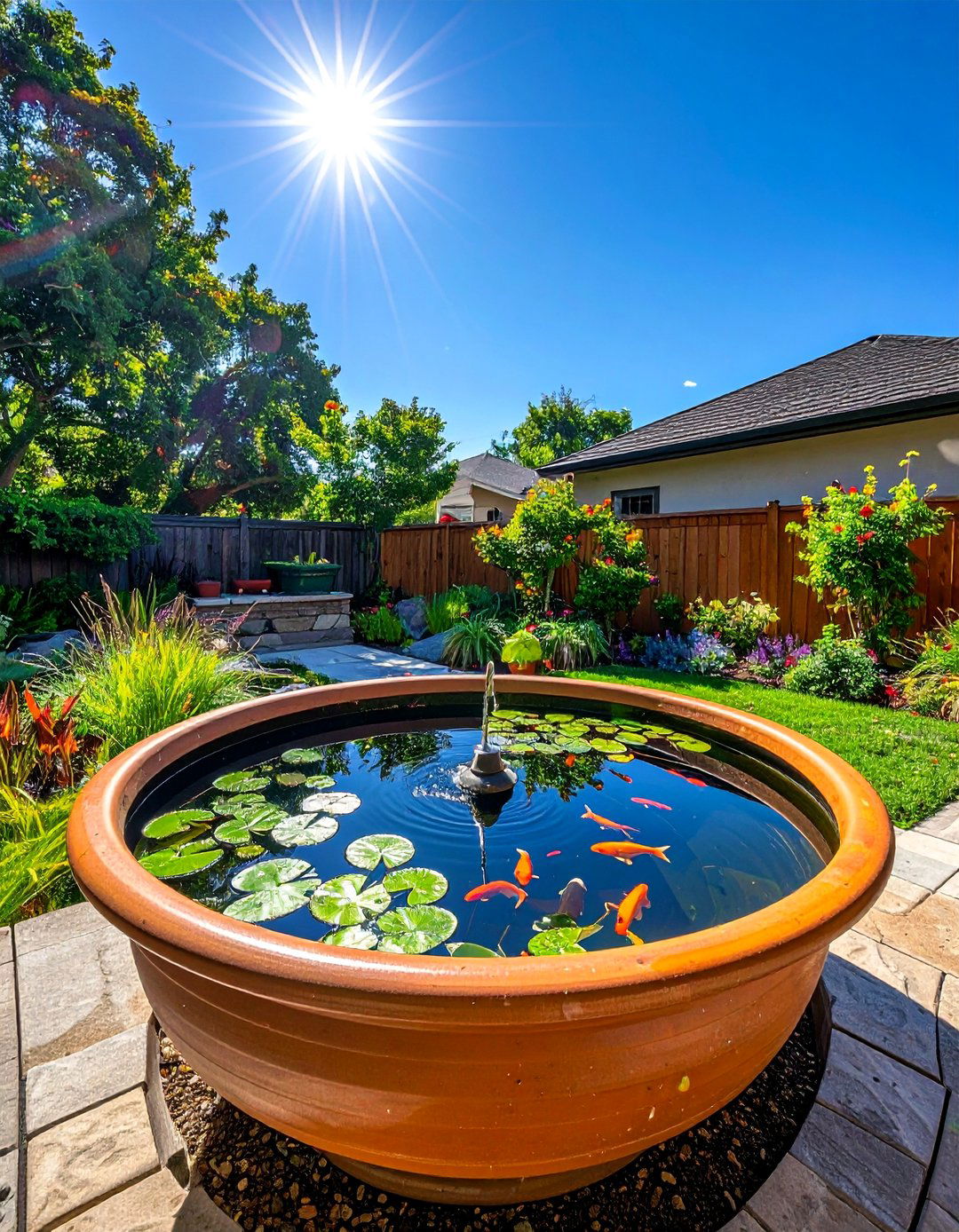
Bring the tranquil sounds and cooling effects of water into your small backyard with container water gardens that require no digging or permanent installation. Use large ceramic pots, whiskey barrels, or modern fiberglass containers to create mini ponds complete with water lilies, lotus, and aquatic plants. Add a small fountain pump for gentle water movement and sound, and consider including goldfish for natural mosquito control and added interest. Position your water garden where you can enjoy it from seating areas or windows, and ensure it receives appropriate light for your chosen plants. These contained water features are perfect for renters or anyone wanting the benefits of a water garden without major landscape changes.
9. Pergola Covered Patios
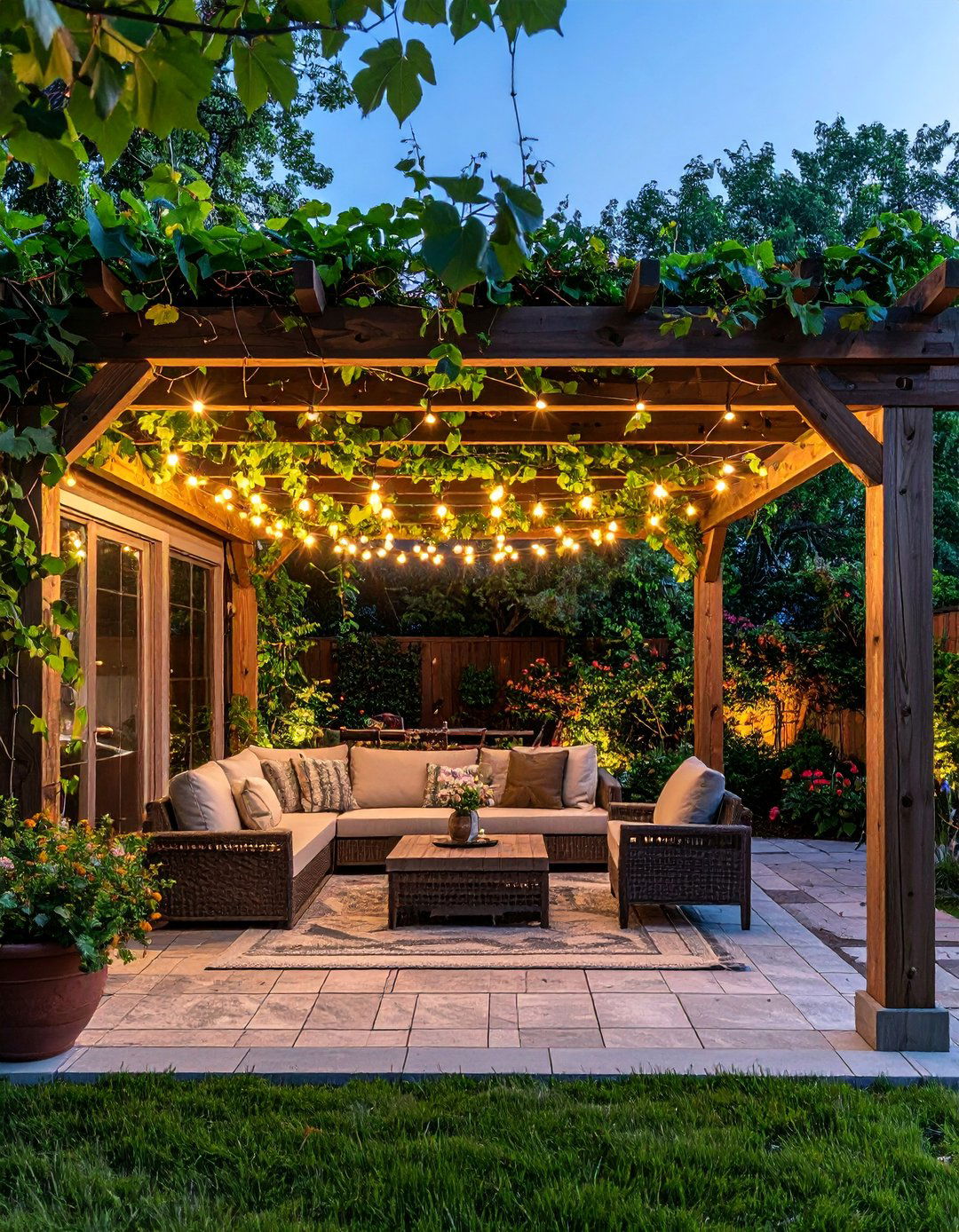
Define your outdoor living space while providing crucial shade and structure with a pergola that creates an outdoor room feel in your small backyard. Whether built from wood, metal, or composite materials, pergolas add vertical interest while supporting climbing plants like grapevines, clematis, or jasmine for natural shade. Install outdoor ceiling fans for air circulation and string lights for evening ambiance. The defined space underneath becomes perfect for dining sets, lounge furniture, or even an outdoor kitchen area. Consider adding retractable fabric panels for adjustable shade and privacy. A well-designed pergola can make a small patio feel more substantial while providing year-round structure that looks beautiful even when plants are dormant.
10. Miniature Orchard Spaces
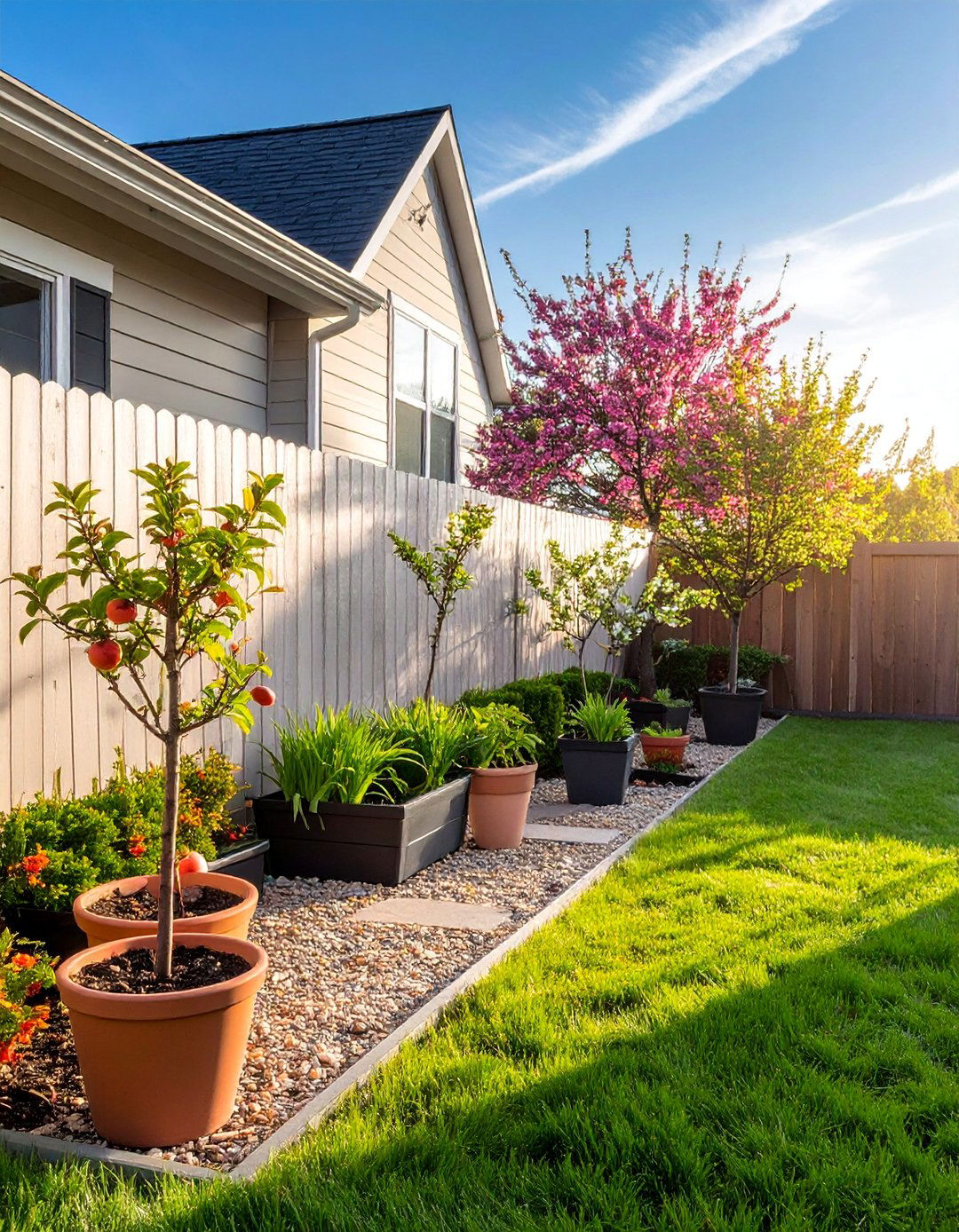
Enjoy fresh fruit from your small backyard by creating a miniature orchard using dwarf fruit trees and espalier techniques that maximize production in minimal space. Dwarf apple, pear, cherry, and citrus trees can thrive in containers or small planting areas while providing seasonal beauty with their blossoms and fruit. Train trees along fences using espalier methods to create living walls that produce food while taking up very little ground space. Choose self-pollinating varieties or plant compatible pairs to ensure good fruit production. Under-plant with herbs or flowers that complement the trees and help with pest control. This approach gives you the satisfaction of growing your own food while adding structure and seasonal interest to your landscape.
11. Modern Gravel Gardens
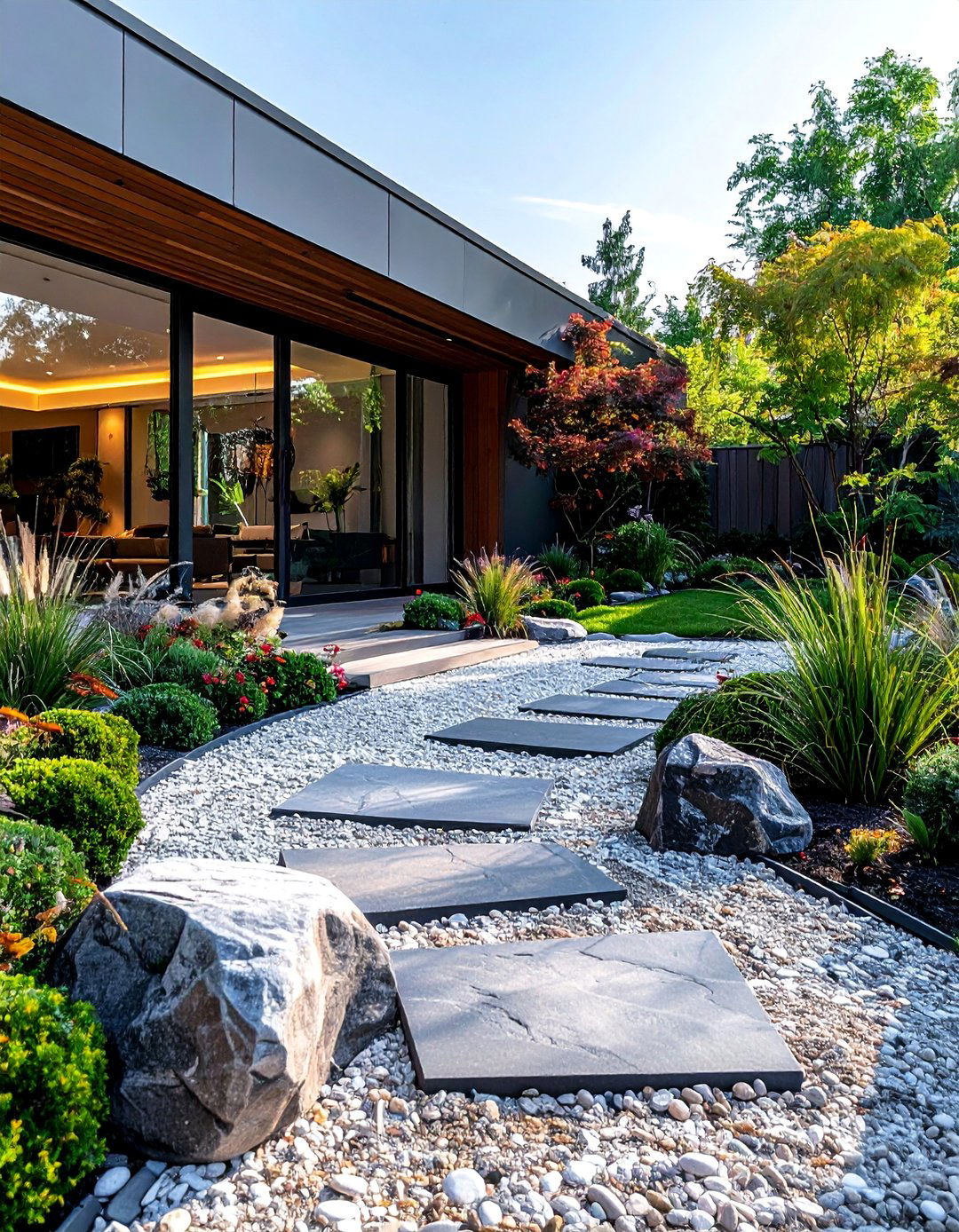
Create a contemporary, low-maintenance landscape using decorative gravel, architectural plants, and clean lines that look stunning year-round with minimal care required. Choose gravel in colors that complement your home's exterior, and use it as both pathway material and planting medium for drought-tolerant plants like ornamental grasses, lavender, and modern succulents. Install landscape fabric underneath to prevent weeds while allowing water drainage. Add sculptural elements like large pottery, modern planters, or architectural lighting for visual interest. This style works particularly well with contemporary homes and creates a sophisticated look that requires little maintenance once established. The gravel also helps with drainage issues while providing a neutral backdrop for plantings.
12. Butterfly and Pollinator Gardens
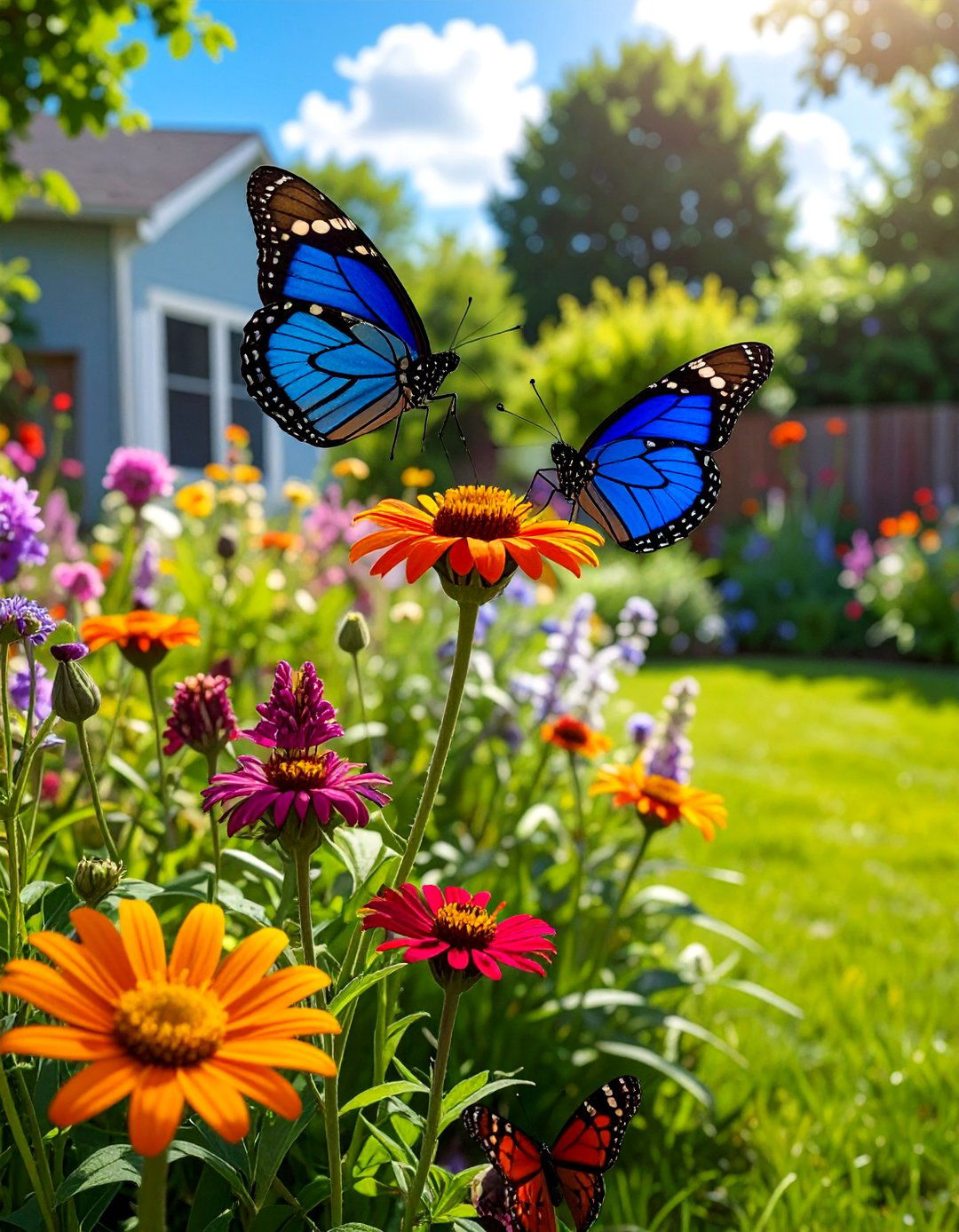
Design a garden that supports local wildlife while providing constant color and movement throughout the growing season with carefully chosen pollinator-friendly plants. Include native wildflowers, herbs like lavender and bee balm, and nectar-rich annuals arranged in natural-looking drifts rather than formal rows. Create different bloom times to provide food sources from spring through fall, and include host plants for butterfly larvae alongside nectar plants for adults. Add shallow water sources and avoid pesticides to create a truly beneficial habitat. Watch as your garden comes alive with butterflies, bees, and hummingbirds that add movement and life to your small space. This approach creates a garden that's beautiful for humans while providing essential resources for pollinators.
13. Zen Meditation Gardens
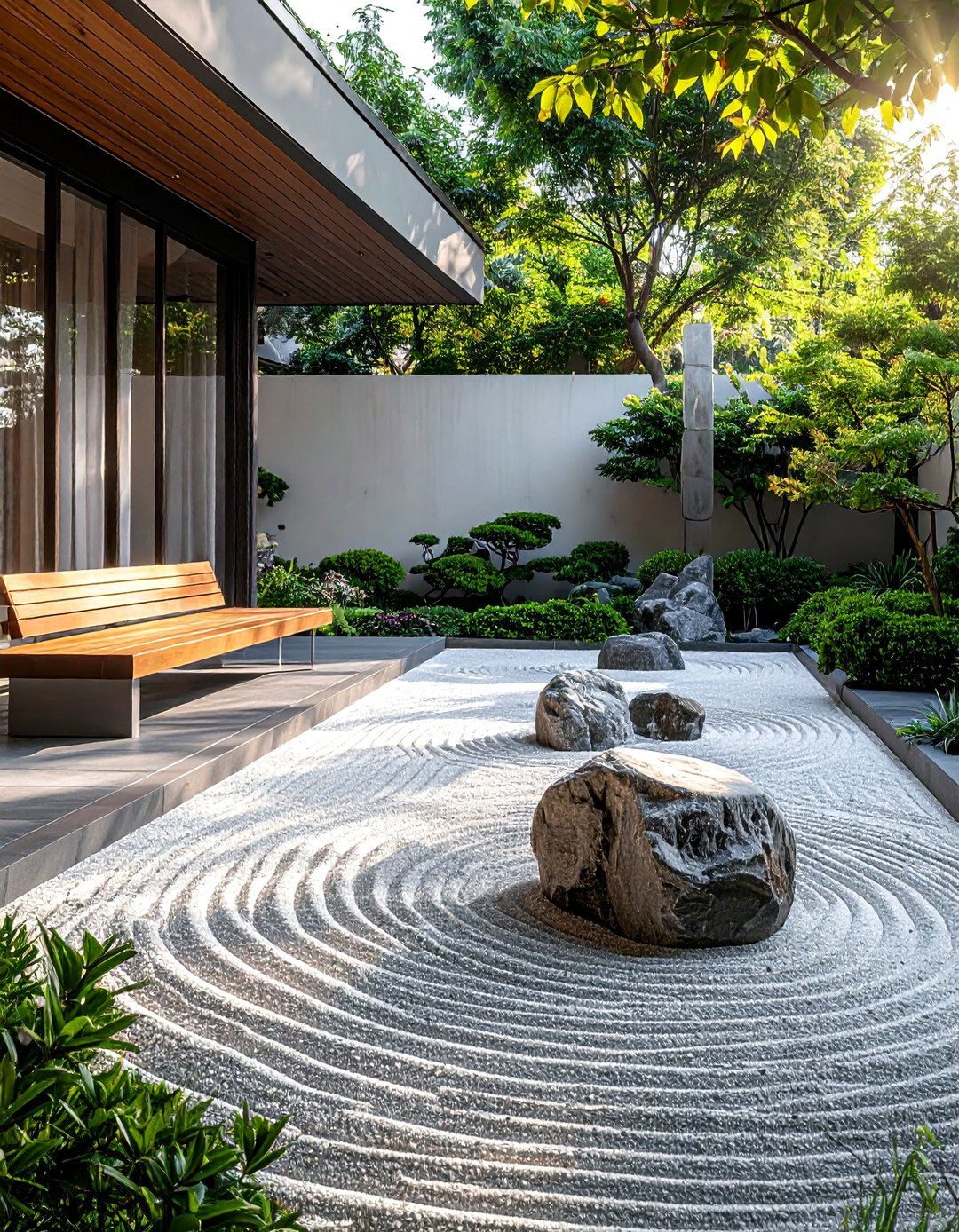
Transform a corner of your backyard into a peaceful retreat designed for relaxation and reflection using principles of Japanese garden design adapted for small spaces. Include elements like a small bench or cushioned area for sitting, carefully placed rocks or stones for visual focus, and plants with interesting textures and forms rather than bright colors. Rake patterns in sand or small gravel areas, and add a simple water feature for soothing sounds. Keep the color palette limited to greens, grays, and earth tones to create a calming atmosphere. This type of garden encourages daily outdoor time for meditation or quiet reflection, providing mental health benefits alongside its visual appeal.
14. Herb Spiral Gardens
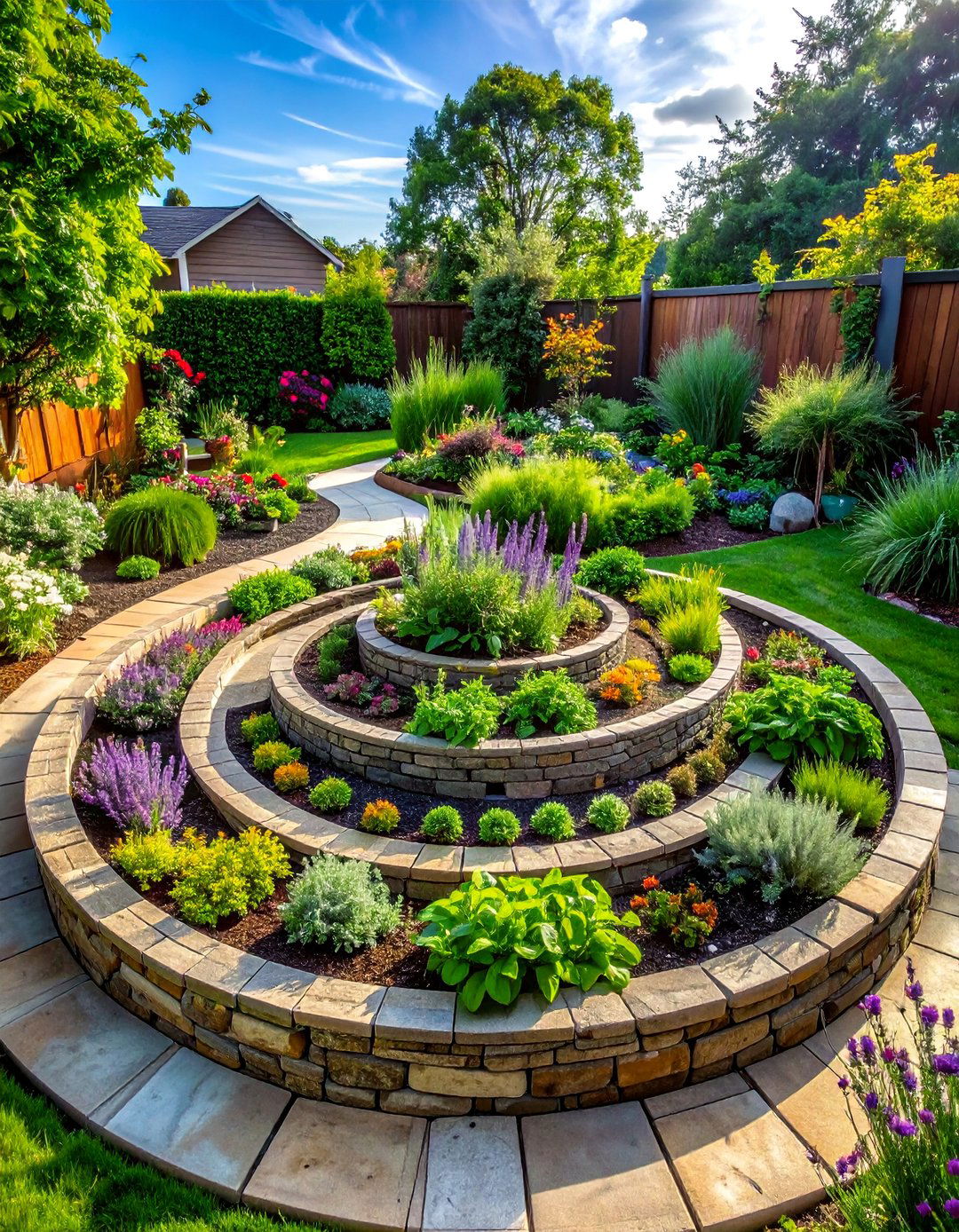
Maximize herb growing space while creating an attractive focal point with a spiral-shaped raised bed that provides different microclimates for various herbs in one compact area. Build the spiral using stones, bricks, or landscape blocks, creating height variations that provide sun-loving herbs at the top and moisture-loving varieties at the bottom. Plant Mediterranean herbs like rosemary, thyme, and oregano at the sunny, well-drained peak, while placing mint, parsley, and chives in the moister, shadier areas below. This design makes harvesting easy while keeping fresh herbs close to your kitchen. The spiral shape adds visual interest and creates more planting surface area than a traditional rectangular bed of the same footprint.
15. Outdoor Movie Theater Setups
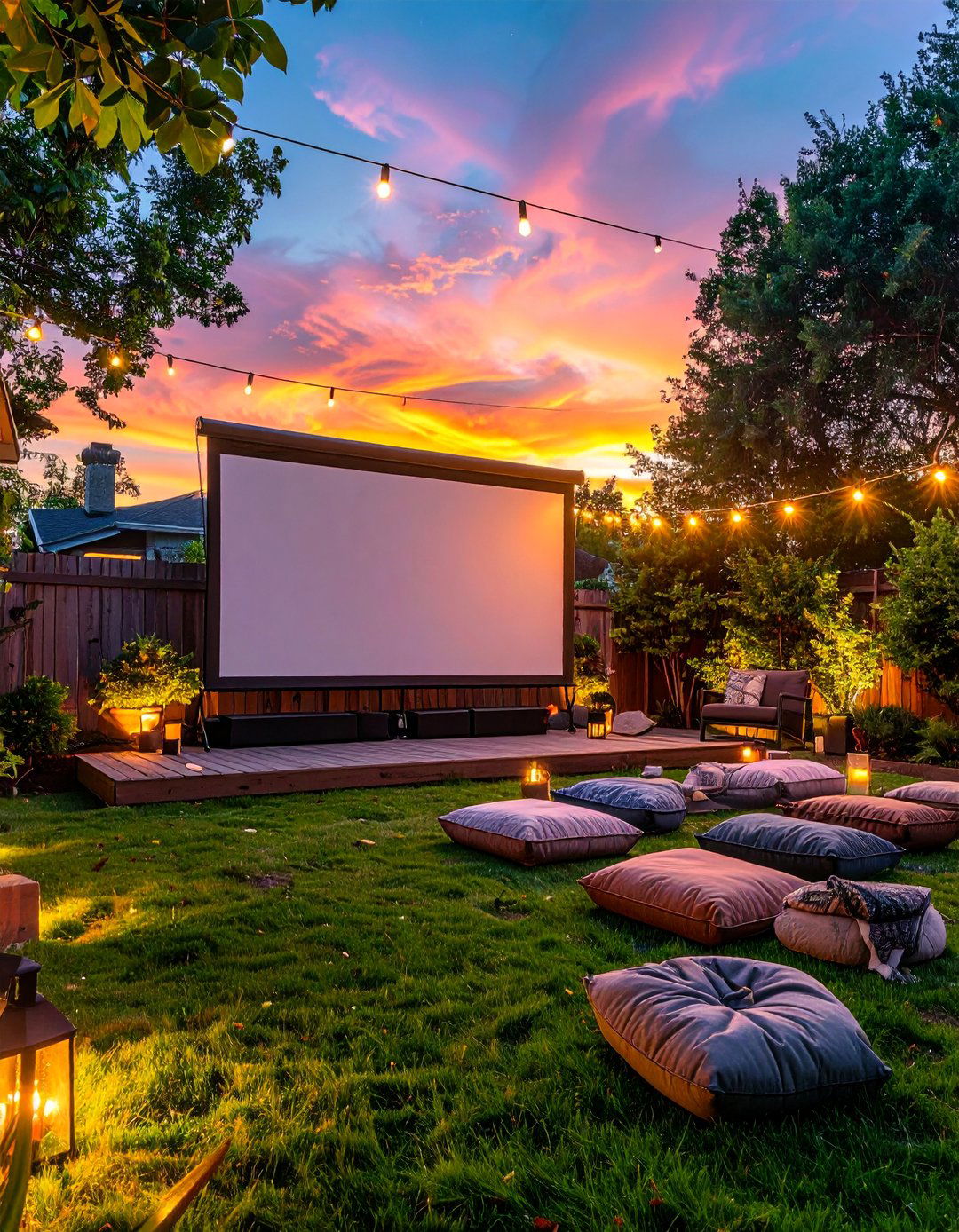
Create magical family entertainment right in your backyard with an outdoor movie setup that transforms your space into a private cinema under the stars. Use a portable projector and a white sheet, blank wall, or inflatable screen to create your viewing surface. Arrange comfortable seating using outdoor cushions, bean bags, or lounge chairs positioned for optimal viewing angles. String lights around the perimeter provide gentle ambient lighting without interfering with the screen. Store equipment in weather-resistant containers when not in use, and consider a portable speaker system for better sound quality. This setup works perfectly for family movie nights, sports viewing, or entertaining friends with classic films.
16. Vertical Trellis Walls
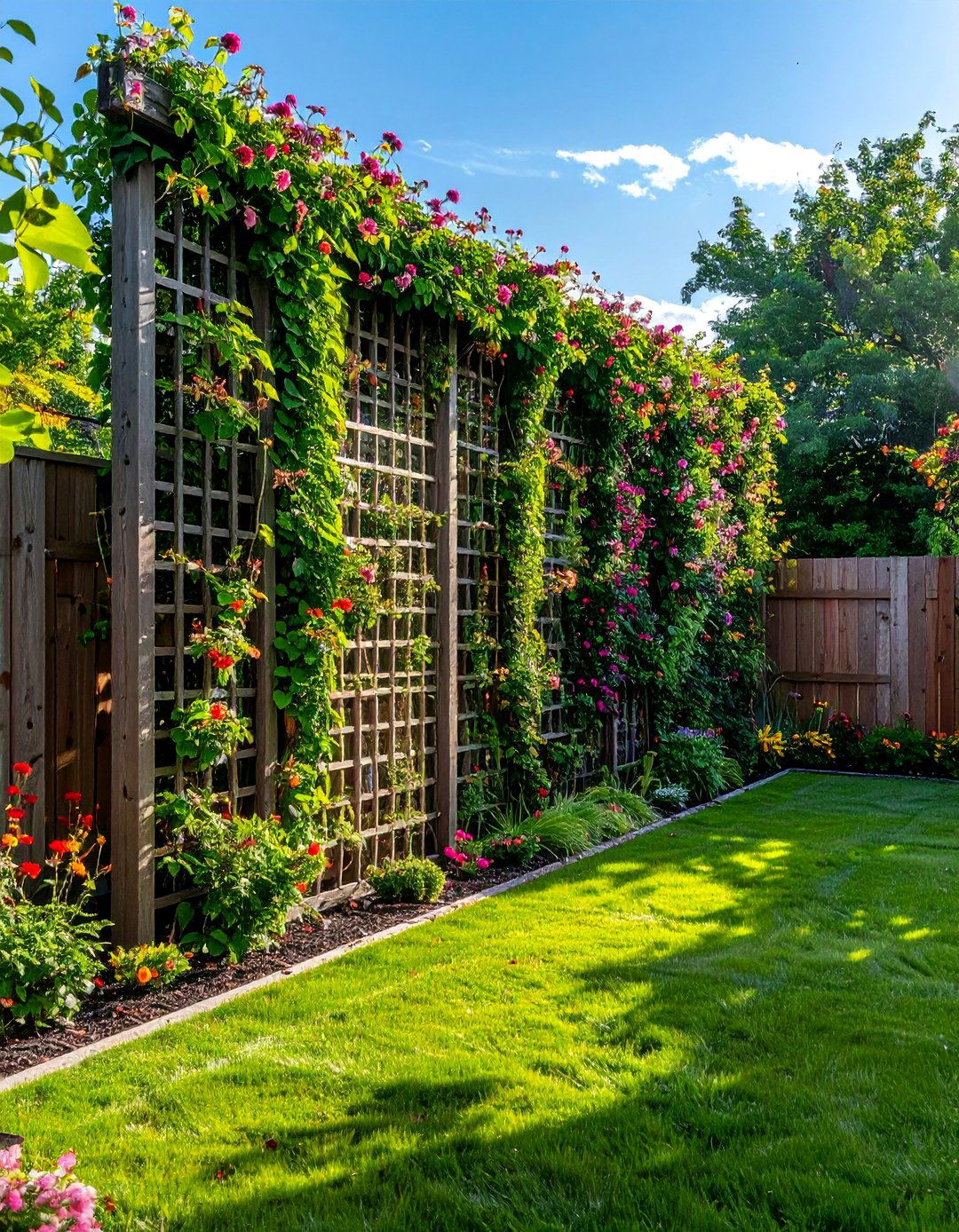
Maximize growing space and create living privacy screens using vertical trellises that support climbing plants while defining different areas of your small backyard. Install sturdy trellises against fences, walls, or as freestanding dividers, then plant fast-growing vines like morning glories, sweet peas, or edible climbers like peas and beans. Wooden, metal, or wire trellises each offer different aesthetic styles to match your garden design. As plants grow, they create natural green walls that provide privacy, reduce noise, and add vertical interest to your space. Choose annual climbers for quick results or perennial vines for long-term structure. This approach effectively doubles your planting space by utilizing vertical surfaces.
17. Cottage Garden Borders
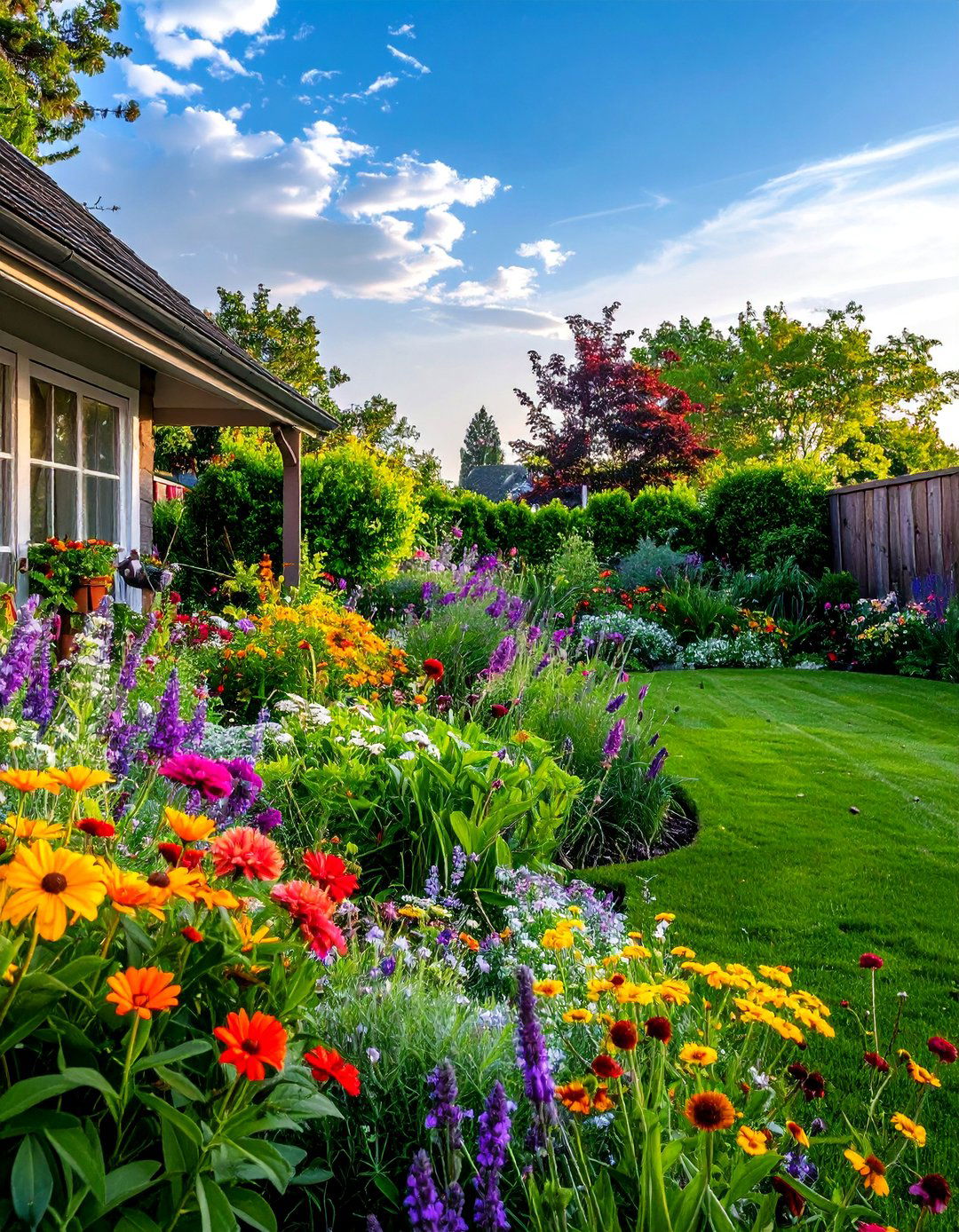
Create charming, informal planting areas that overflow with color and fragrance using the relaxed, abundant style of traditional cottage gardens adapted for small spaces. Mix perennials, annuals, herbs, and small shrubs in seemingly casual arrangements that actually require thoughtful planning to ensure continuous blooms and complementary colors. Include classic cottage plants like roses, delphiniums, hollyhocks, and sweet alyssum alongside practical herbs and vegetables. Allow plants to self-seed and spread naturally for that authentic cottage garden look. Edge pathways with low-growing plants that can spill onto walkways, and include a few taller plants for structure and height variation. This style celebrates abundance and creates gardens that feel mature and established quickly.
18. Multi-Season Interest Gardens
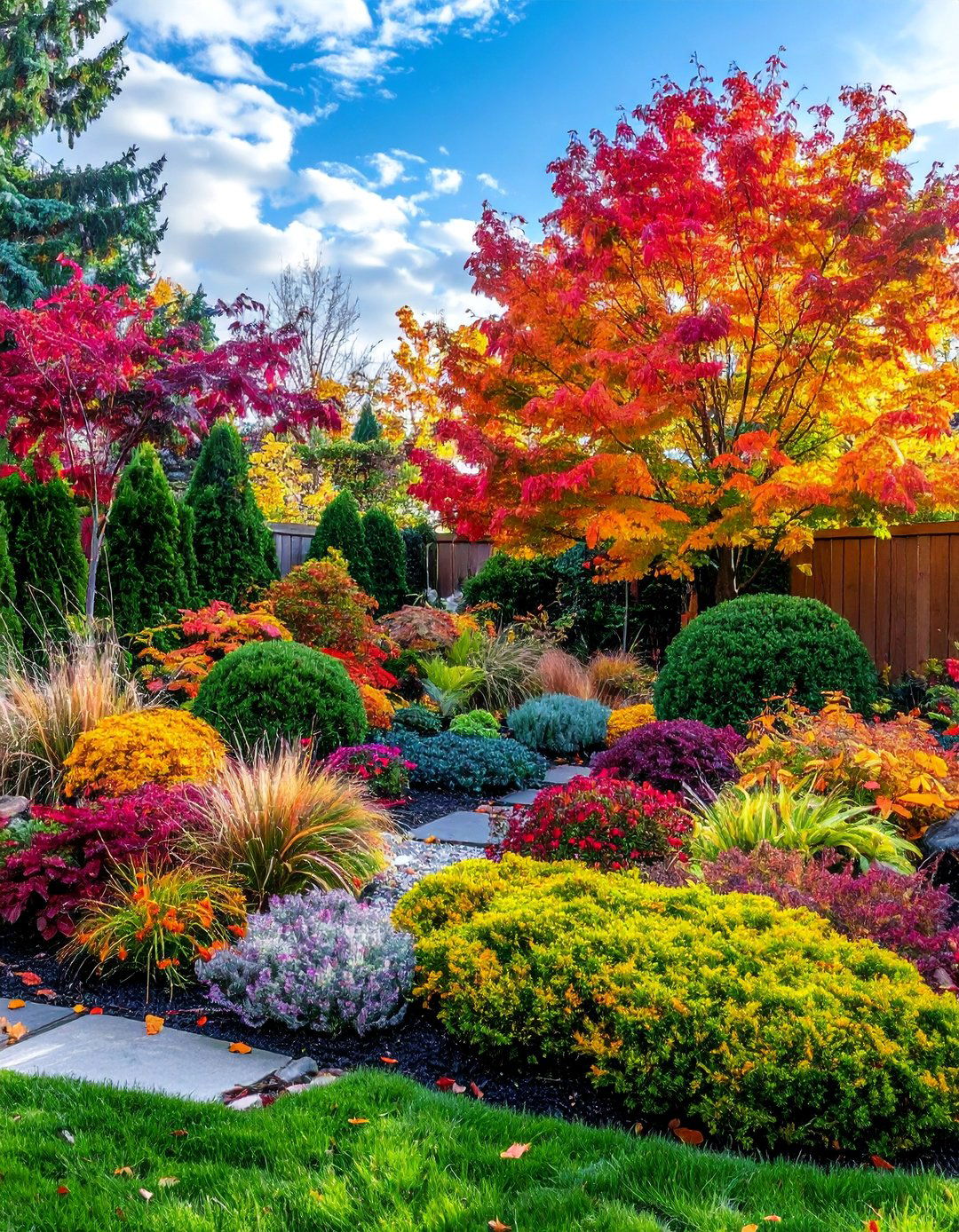
Design planting schemes that provide beauty and interest throughout all four seasons, ensuring your small backyard never looks bare or boring regardless of the weather. Choose plants with multiple seasons of interest - spring flowers, summer foliage, fall color, and winter structure or berries. Include evergreen shrubs for year-round structure, deciduous trees for seasonal change, and perennials that offer interesting seed heads or winter stems. Add elements like decorative containers, garden art, or architectural features that look good regardless of what's planted around them. Consider the winter view from inside your home when planning, ensuring your garden provides beauty even when you're not spending time outdoors. This approach creates a dynamic landscape that evolves and surprises throughout the year.
19. Outdoor Bar and Beverage Stations
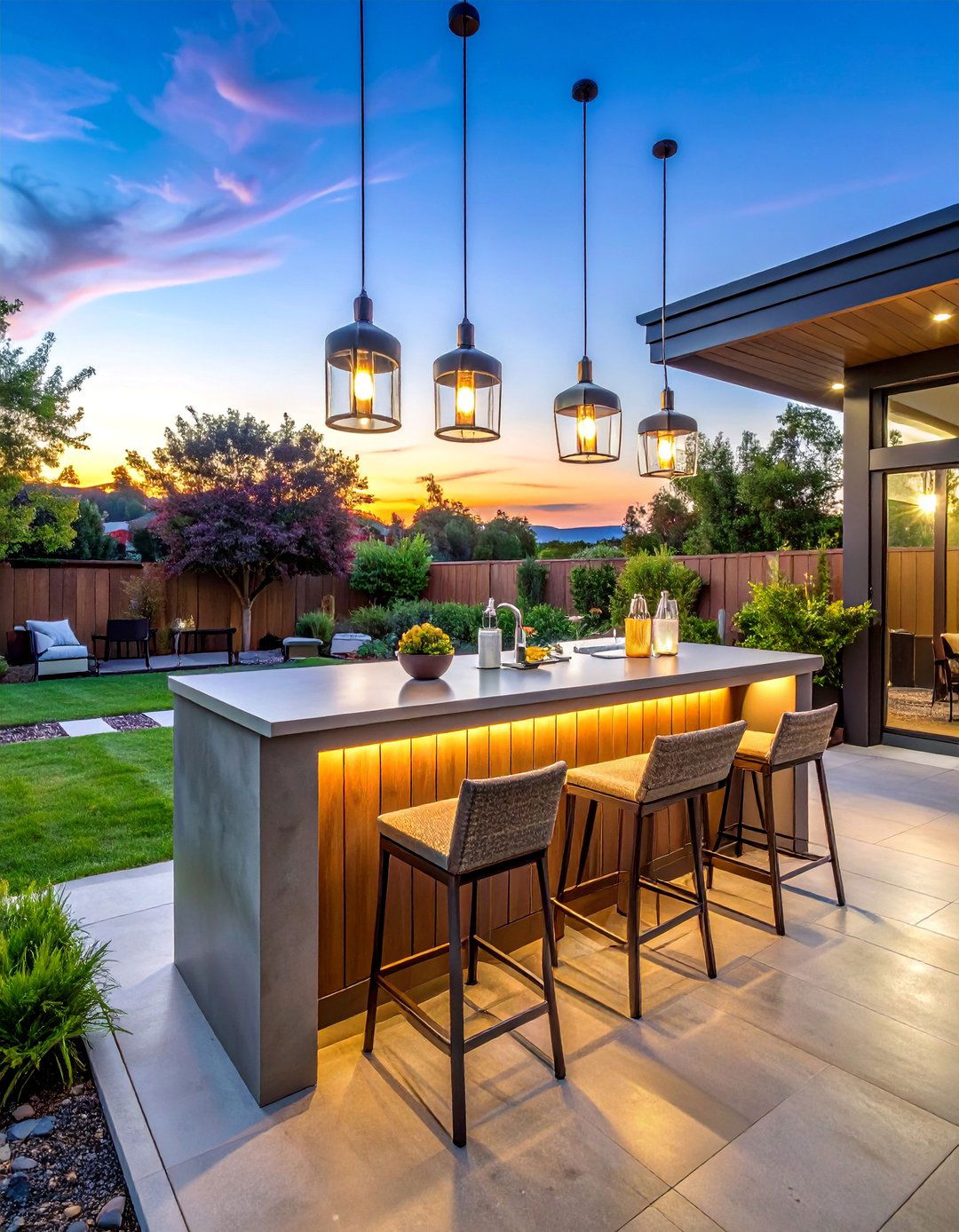
Enhance your entertaining capabilities with a dedicated outdoor bar area that makes serving drinks and hosting gatherings effortless and stylish. Create a permanent bar using weather-resistant cabinetry and countertops, or use a rolling cart that can be moved and stored as needed. Include storage for glasses, bar tools, and beverages, plus a small refrigerator or ice bucket for keeping drinks cold. Add pendant lighting or string lights overhead for evening ambiance, and consider bar stools that tuck underneath when not in use. Position the bar near your seating area but not so close that it dominates the space. This addition turns any gathering into a more festive occasion and encourages outdoor entertaining.
20. Pathway and Stepping Stone Gardens
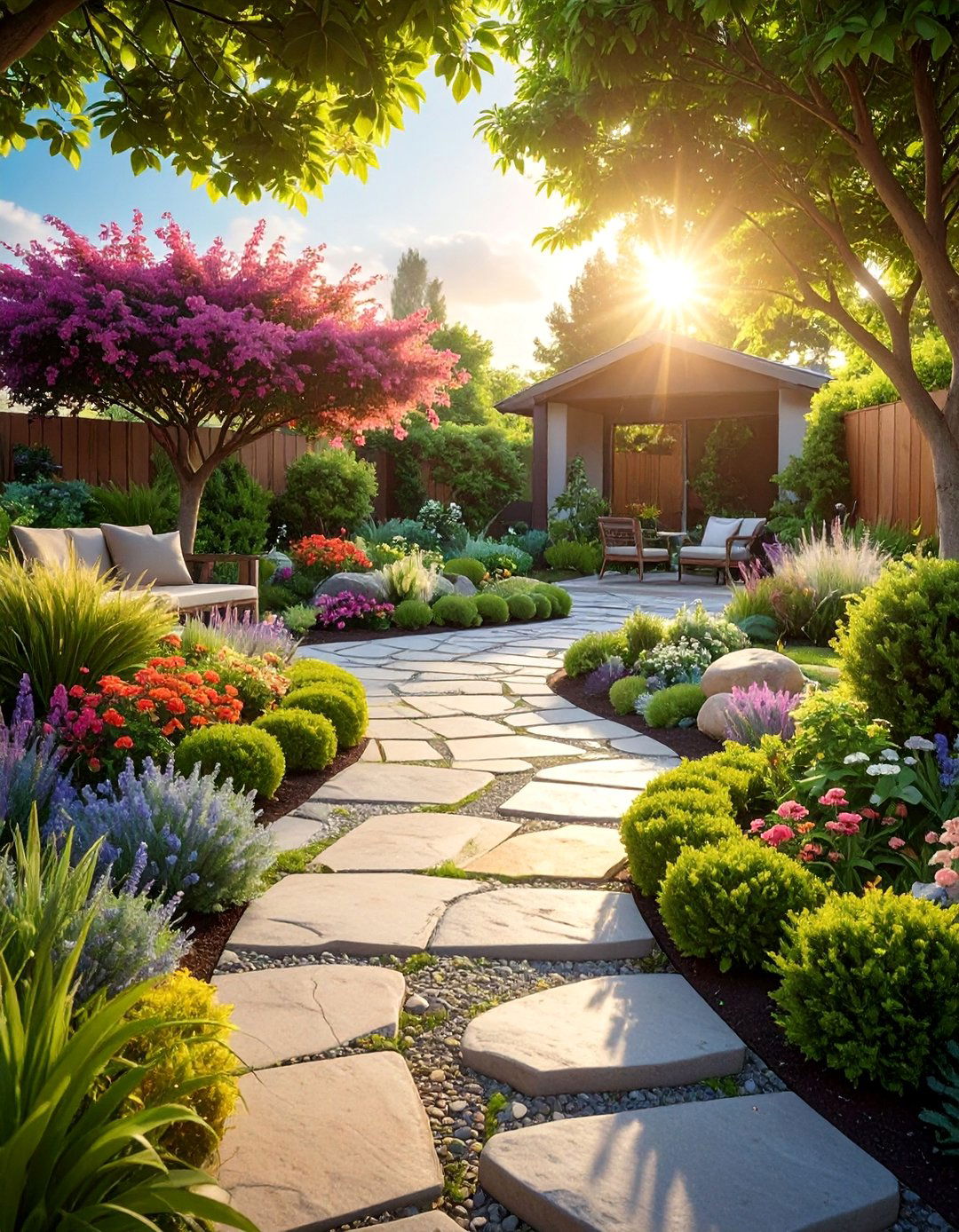
Guide visitors through your small backyard while adding structure and visual interest with thoughtfully designed pathways that connect different areas and create the illusion of larger space. Use materials like flagstone, brick, gravel, or timber rounds to create paths that curve gently rather than running straight lines, which makes spaces feel larger. Plant low-growing ground covers or moss between stepping stones, and edge pathways with taller plants to create the feeling of walking through garden rooms. Include small destination areas along the path - a bench, sculpture, or special plant grouping - to encourage exploration and make the journey as important as the destination. Well-designed paths can make even tiny gardens feel like extensive landscapes.
21. Greenhouse and Cold Frame Gardens
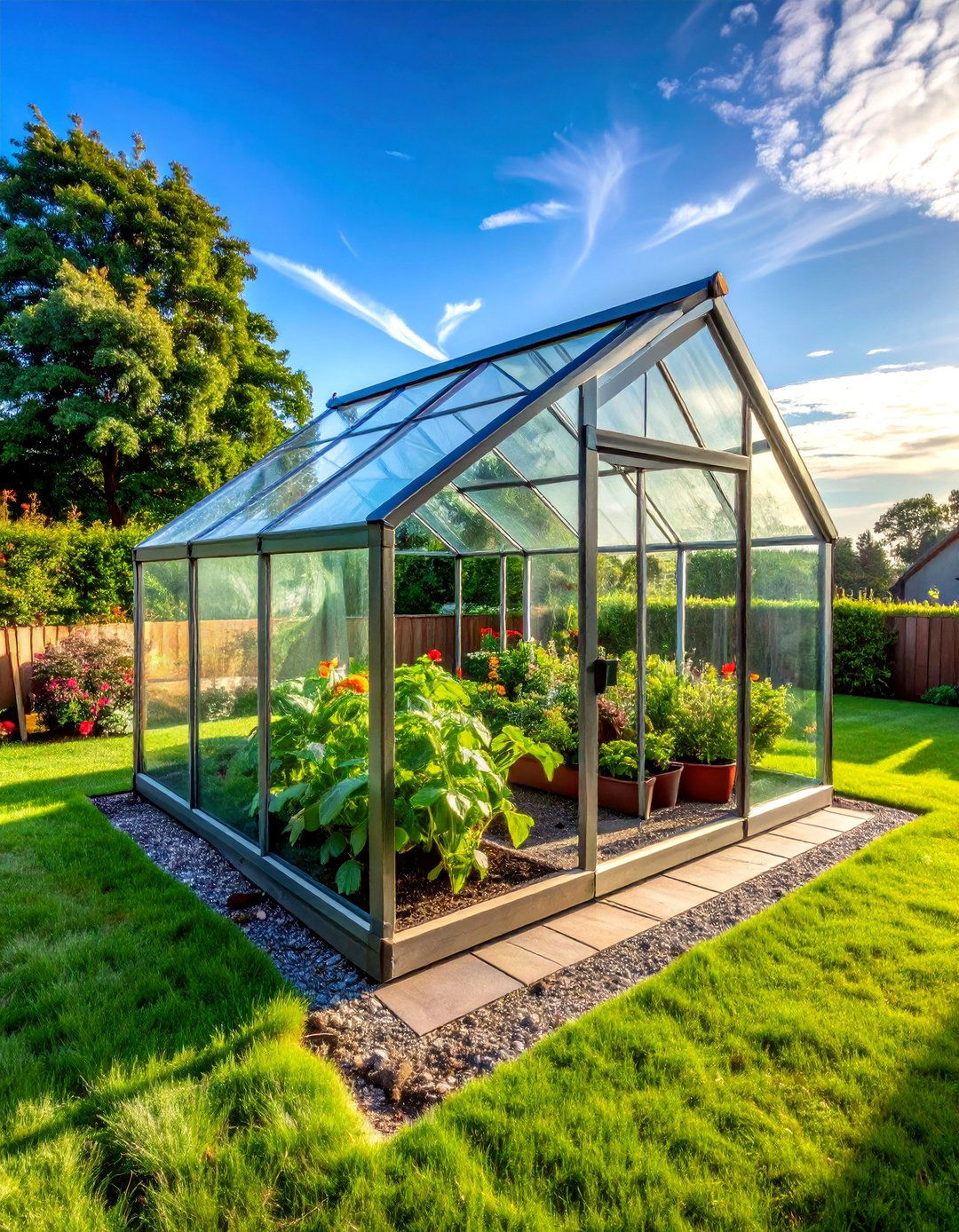
Extend your growing season and protect tender plants with small greenhouse structures or cold frames that allow year-round gardening in compact spaces. Even a small lean-to greenhouse against a wall or fence can provide space for starting seeds, overwintering plants, and growing fresh greens through cold months. Cold frames built from recycled windows offer a simpler option for season extension without the space requirements of a full greenhouse. Position these structures to receive maximum winter sun while providing some summer shade. Use them to start warm-season plants early, grow cool-season crops late, and protect tender perennials through winter. This approach lets dedicated gardeners maximize their harvest and growing time regardless of climate.
22. Sports and Activity Zones
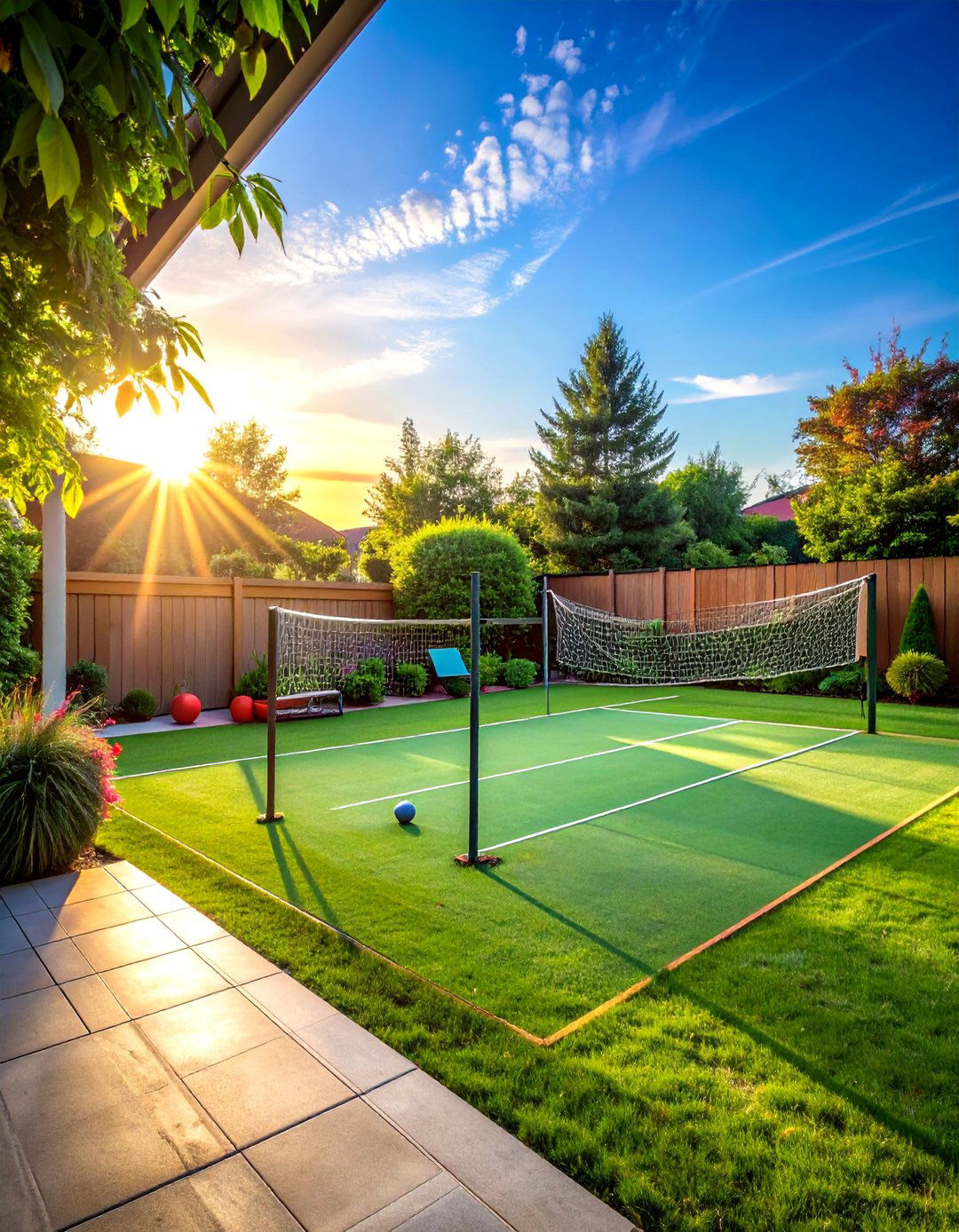
Create designated areas for physical activities and games that make your small backyard more functional for active families while maintaining its beauty and appeal. Install a basketball hoop on a garage wall, create a bocce ball court using decomposed granite, or designate space for badminton or volleyball with removable nets. Use weather-resistant storage to keep equipment organized and accessible, and choose activities that don't require permanent installation if you rent your home. Design activity areas to serve double duty - a bocce court can become additional patio space when not used for games. Consider your neighbors when planning activities, and choose options that won't create noise issues or require balls flying into adjacent yards.
23. Wildlife Habitat Gardens
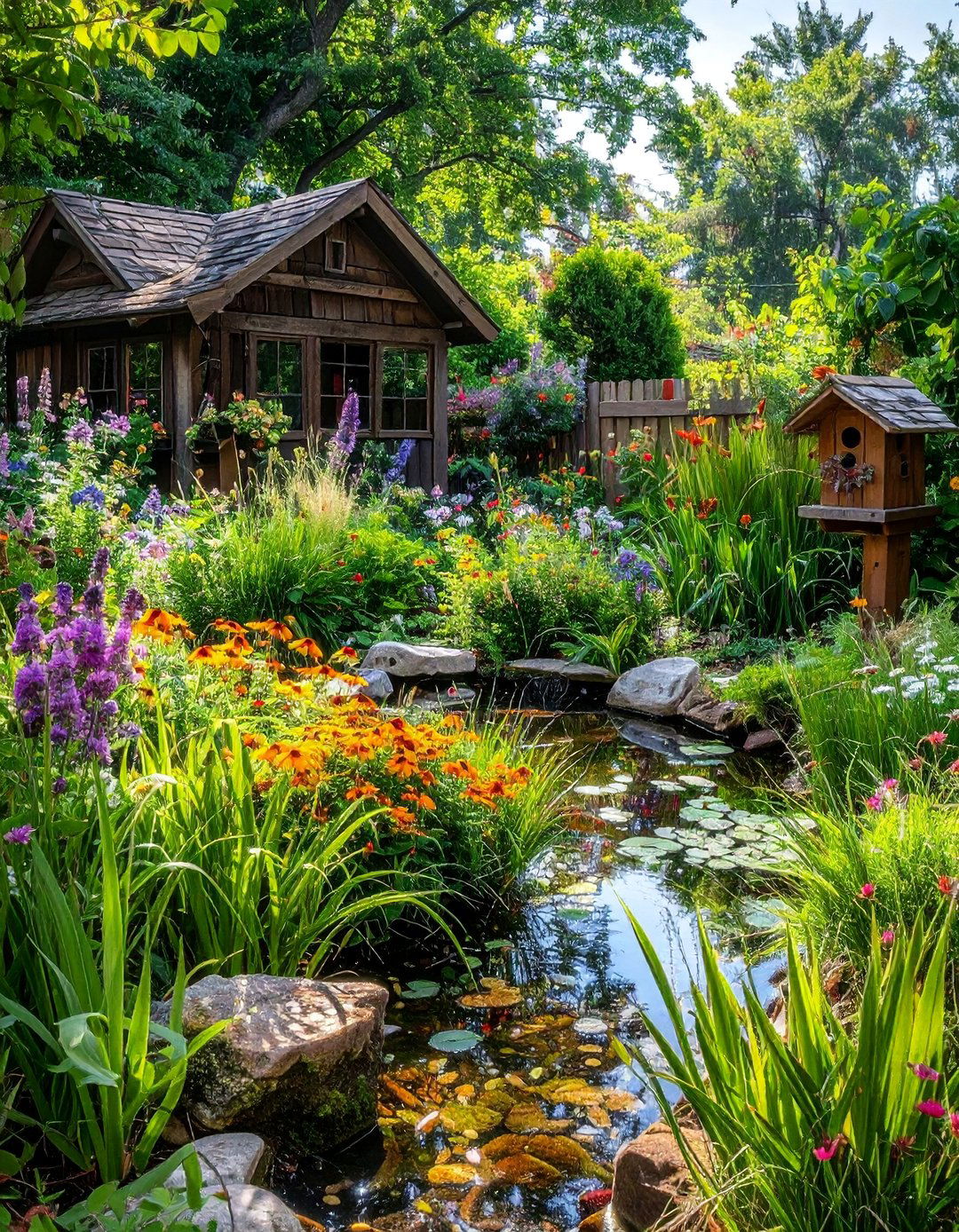
Transform your small backyard into a certified wildlife habitat that supports local birds, butterflies, and beneficial insects while creating a more dynamic and interesting outdoor space. Include the four basic requirements wildlife need: food, water, shelter, and nesting sites. Plant native species that provide berries, seeds, and nectar throughout the seasons, and avoid pesticides that harm beneficial insects. Add bird houses, bee hotels, and brush piles for shelter and nesting opportunities. Include different water sources like shallow dishes for drinking, small ponds for bathing, and dripping water for sound attraction. This approach creates a garden that's constantly changing as wildlife visits, providing natural entertainment and education opportunities while supporting local ecosystems.
24. Edible Landscape Designs
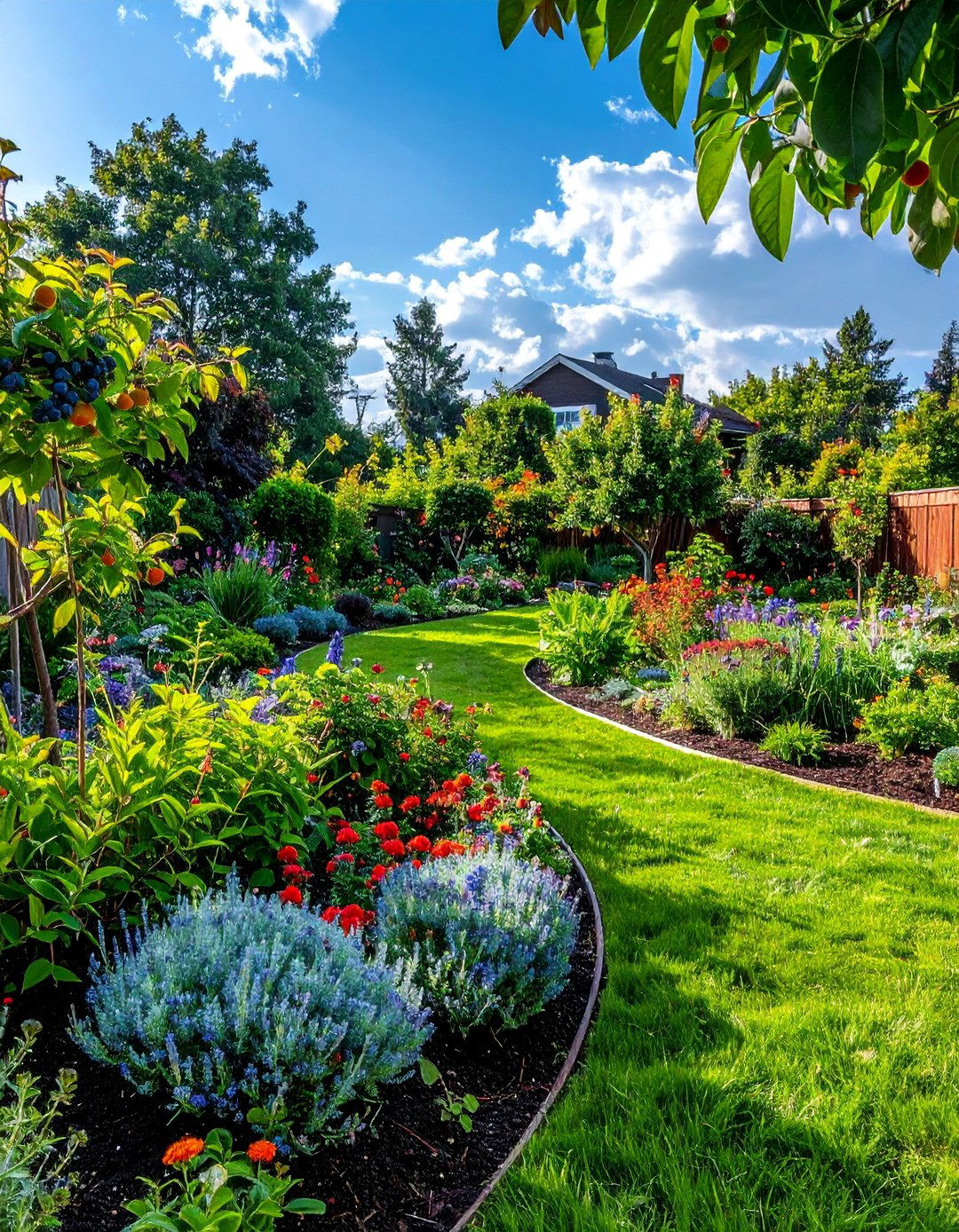
Integrate food production seamlessly into your ornamental landscape by choosing edible plants that are as beautiful as they are functional in your small backyard design. Replace traditional foundation plantings with edible options like blueberry bushes, dwarf fruit trees, and ornamental kale or chard. Use herbs like lavender, rosemary, and thyme as landscape plants that provide both beauty and culinary value. Train grape vines on pergolas, plant edible flowers like nasturtiums and violas in flower beds, and use edible ground covers like thyme or mint in appropriate areas. This approach maximizes the productivity of every square foot while creating gardens that look intentionally designed rather than purely utilitarian. Guests often don't realize they're walking through an edible landscape until you point it out.
25. Lighting Design Schemes
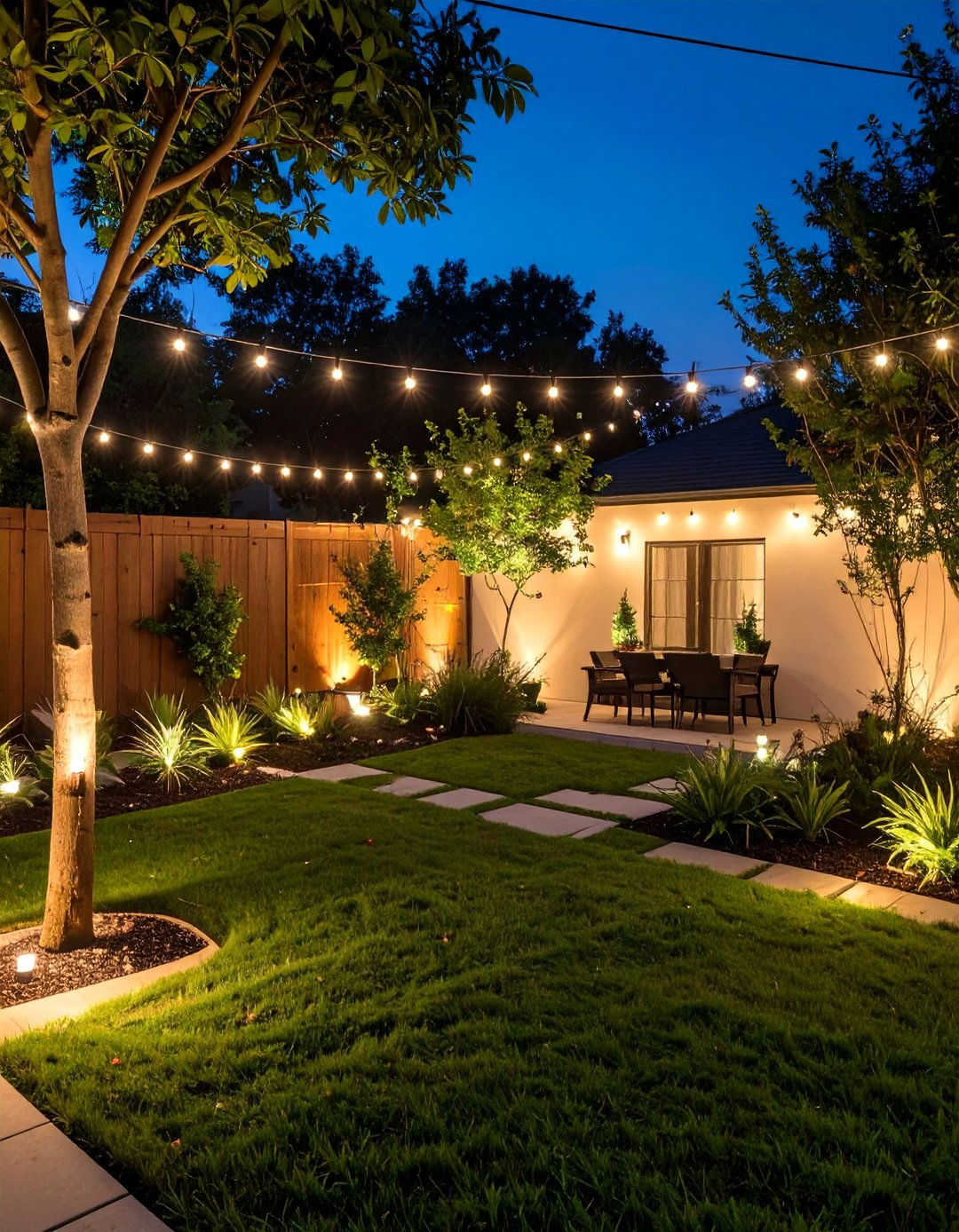
Create enchanting nighttime ambiance and extend the usable hours of your small backyard with thoughtfully planned lighting that enhances safety while showcasing your garden's best features. Layer different types of lighting including path lights for safety, uplighting for trees and architectural features, and ambient lighting like string lights or lanterns for entertaining areas. Use solar options where possible to avoid wiring complications, and choose warm-colored LED bulbs for the most flattering and energy-efficient illumination. Position lights to avoid glare while providing adequate illumination for activities like dining or reading. Timer controls make lighting effortless, and dimmers allow you to adjust the mood for different occasions. Good lighting design can make small spaces feel larger and more magical after dark.
26. Seasonal Color Gardens
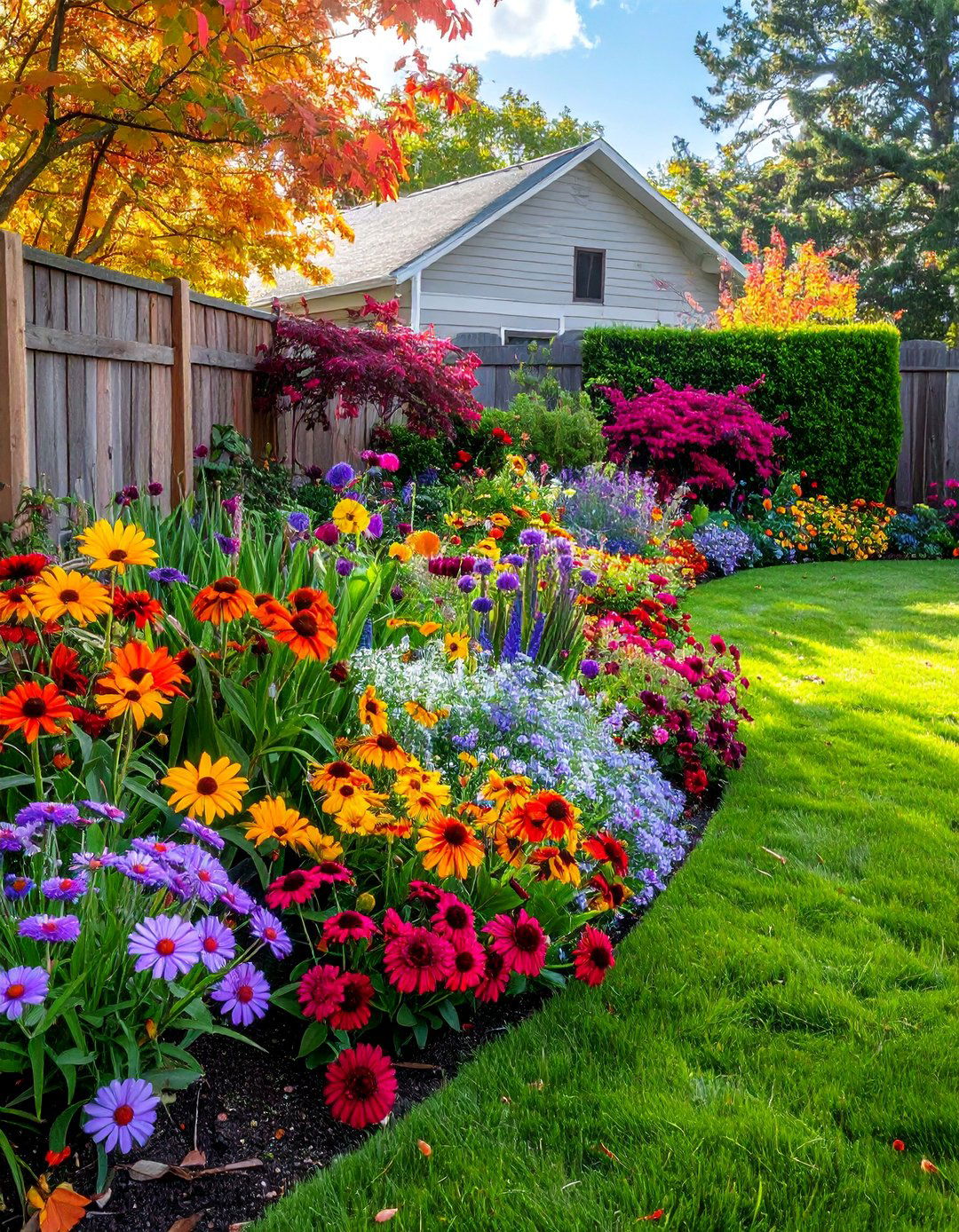
Plan plantings that provide a continuous succession of color throughout the growing season, ensuring your small backyard always has something beautiful in bloom regardless of the time of year. Create a schedule showing when different plants bloom, and choose combinations that provide overlapping color seasons - spring bulbs giving way to early perennials, summer annuals filling mid-season gaps, and fall-blooming plants extending color into autumn. Include plants with colorful foliage as well as flowers, and don't forget winter interest from berries, seed heads, and evergreen plants. Use containers to add seasonal color that can be changed out as needed, and include some plants that bloom for extended periods rather than just a few weeks. This approach creates gardens that reward regular observation and provide constant beauty.
27. Storage and Organization Solutions
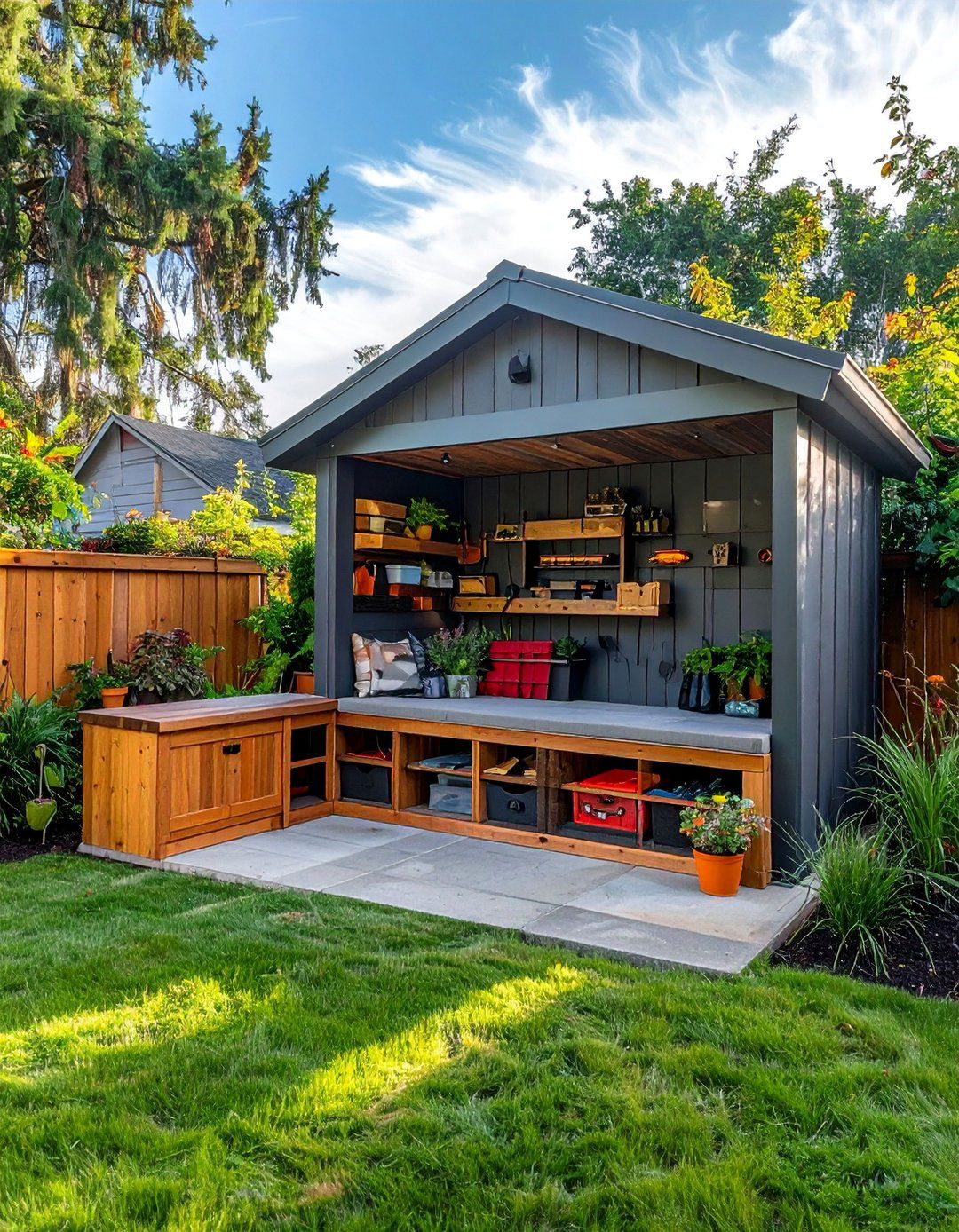
Maximize functionality in your small backyard with clever storage solutions that keep tools, cushions, toys, and equipment organized while maintaining the space's aesthetic appeal. Built-in storage benches provide seating while hiding garden tools or outdoor cushions, and decorative sheds can store larger items while serving as architectural features. Use vertical storage on walls and fences for tools, and choose furniture with built-in storage whenever possible. Weather-resistant bins and baskets keep smaller items organized and accessible, while hooks and hangers utilize wall space efficiently. Good storage solutions make small spaces more functional and help maintain a clean, uncluttered appearance that makes areas feel larger than they actually are.
28. Privacy Screen Plantings
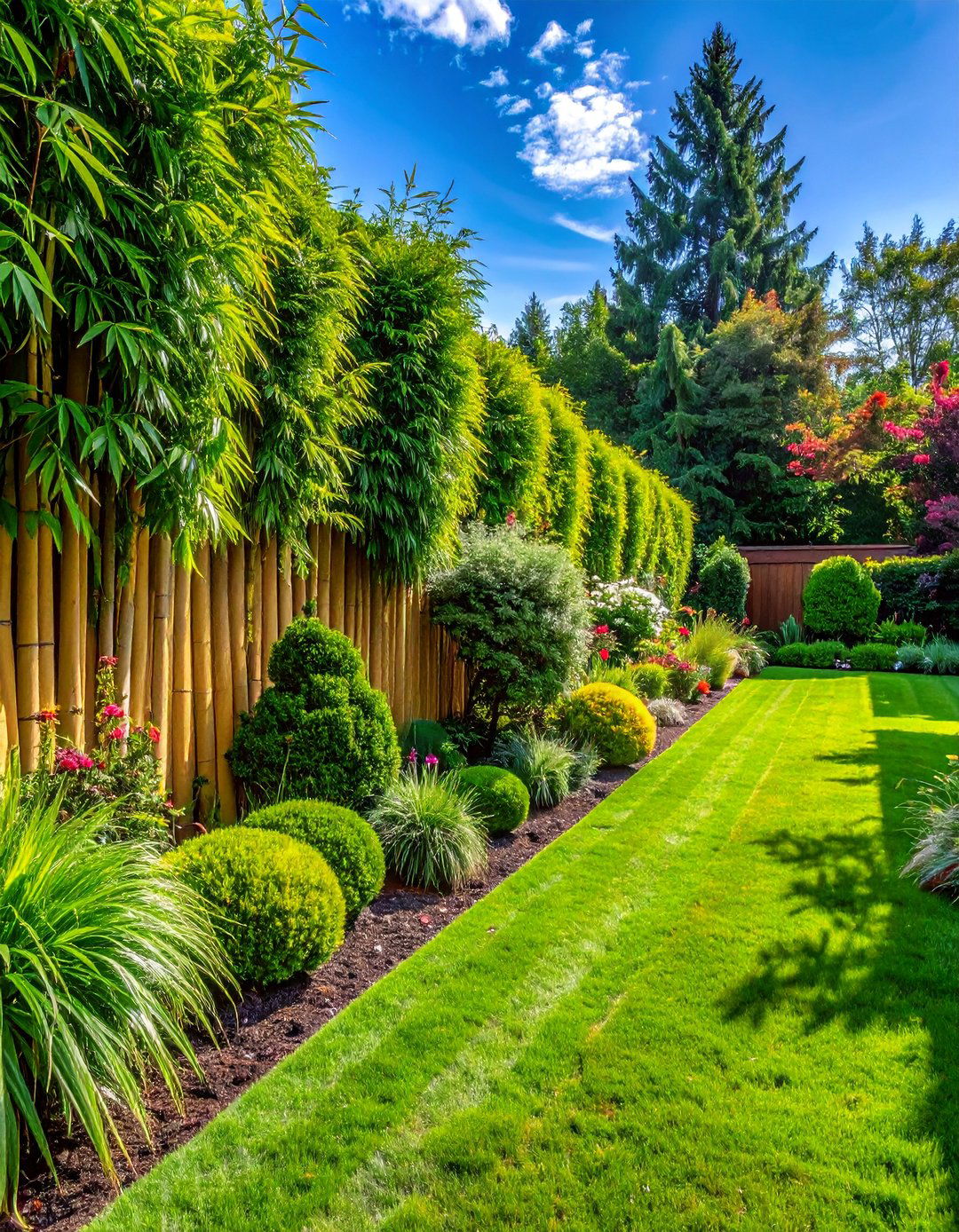
Create natural privacy barriers using fast-growing plants and clever design techniques that block unwanted views while adding beauty and structure to your small backyard. Choose evergreen trees and shrubs for year-round screening, or use deciduous plants that provide privacy during the growing season when you use outdoor spaces most. Bamboo provides quick screening but should be contained to prevent spreading. Living walls of climbing plants on trellises offer flexible screening that can be moved or modified as needed. Layer different height plants to create privacy from both ground level and second-story windows. Consider seasonal changes and mature plant sizes when planning, ensuring your privacy solutions don't eventually overwhelm your small space.
29. Microclimate Garden Zones
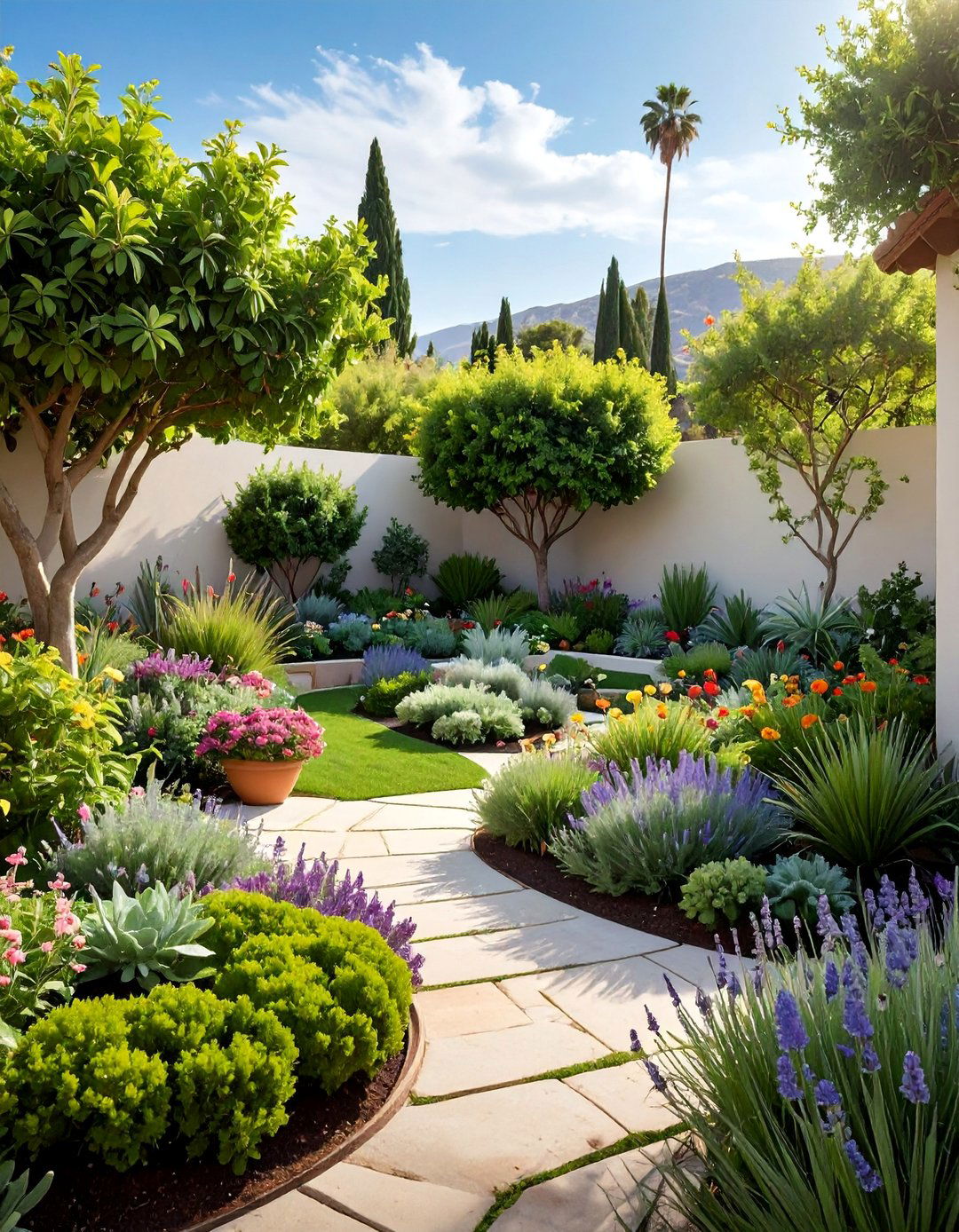
Take advantage of the different growing conditions within your small backyard by creating specialized planting areas that cater to the unique microclimates naturally present in your space. Identify areas that receive different amounts of sun, wind protection, and moisture retention, then choose plants specifically suited to each zone's conditions. Create a hot, dry Mediterranean zone near south-facing walls, a cool, moist area near air conditioning units or in shade, and wind-protected areas for tender plants. Use hardscaping and plant placement to modify existing conditions - adding thermal mass to extend growing seasons or creating windbreaks to protect sensitive areas. This approach allows you to grow a wider variety of plants successfully while working with rather than against your site's natural conditions.
30. Container Garden Collections
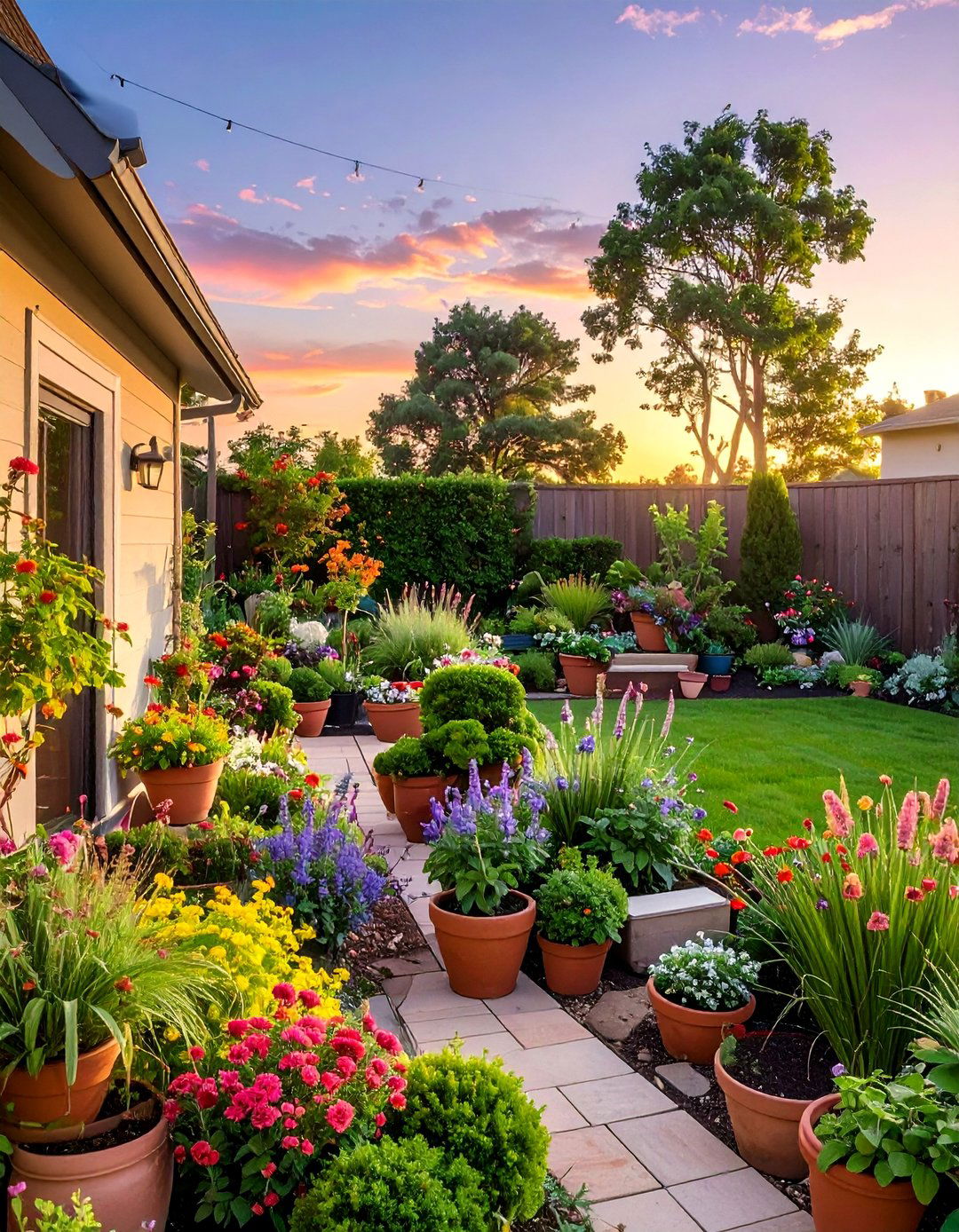
Develop themed container gardens that can be easily rearranged, updated seasonally, and modified as your interests and needs change without permanent landscape commitment. Group containers of different sizes and materials to create visual impact while providing flexibility for changing plant combinations throughout the year. Develop themes like Mediterranean herbs, tropical foliage, succulent collections, or cutting flower gardens that can be mixed and matched as desired. Use wheeled platforms for larger containers to make rearrangement easier, and choose containers with good drainage and weather resistance. This approach allows renters to create substantial gardens and gives homeowners the flexibility to experiment with different plants and design ideas before committing to permanent plantings.
31. Playground Integration Designs
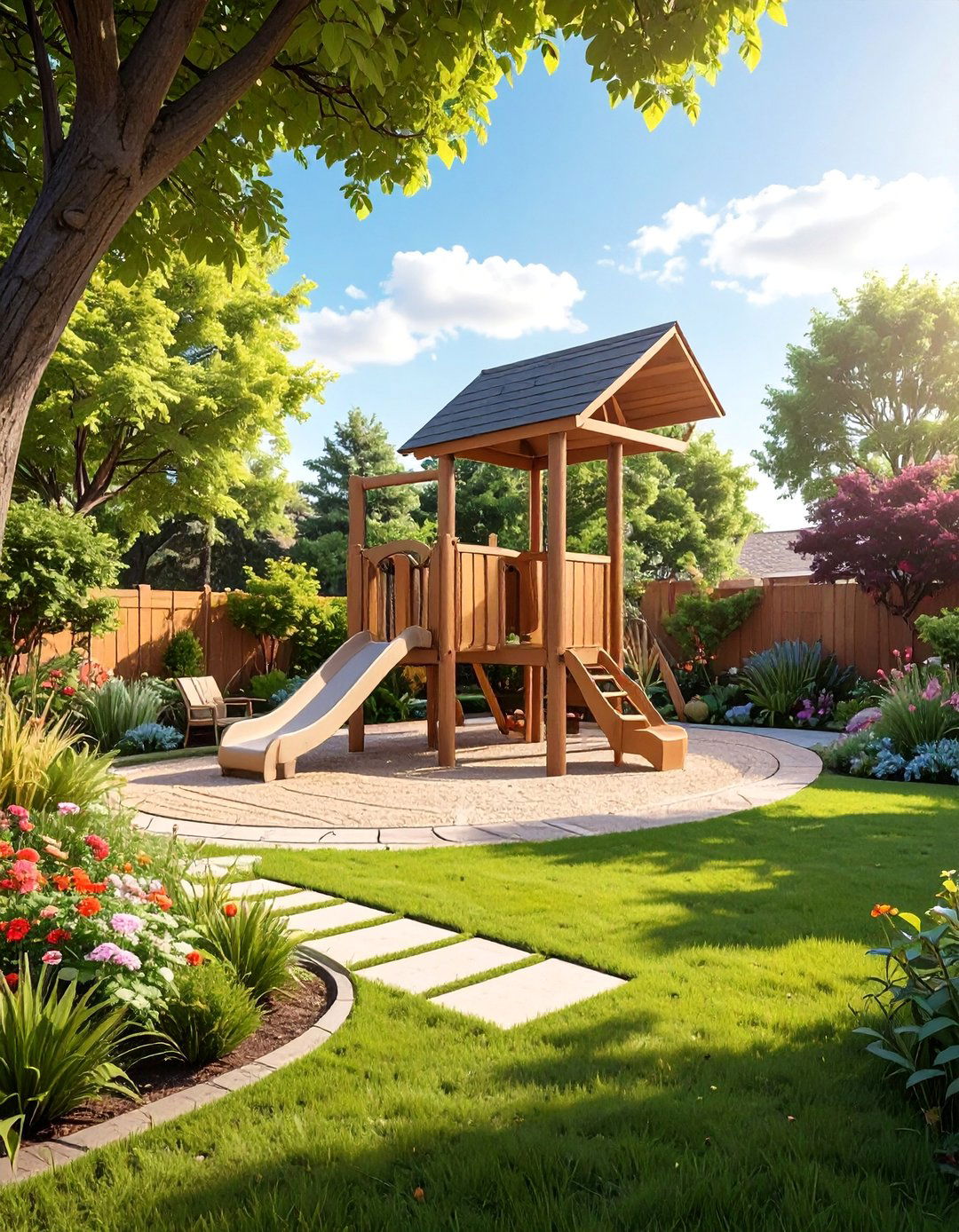
Seamlessly blend children's play equipment into your small backyard landscape so it enhances rather than dominates the space while providing safe, engaging outdoor activities for kids. Choose naturally-colored play equipment that blends with your garden aesthetic, and surround it with appropriate plantings that won't interfere with safety zones. Create defined play areas using different ground materials like wood chips, sand, or artificial turf that clearly separate active zones from planted areas. Include storage for toys and equipment that doubles as seating or additional play features. Design gardens that engage children's curiosity with sensory plants, butterfly gardens, and small vegetable patches where kids can learn about growing things. This integration creates family-friendly outdoor spaces that work for all ages.
32. Rooftop and Balcony Gardens
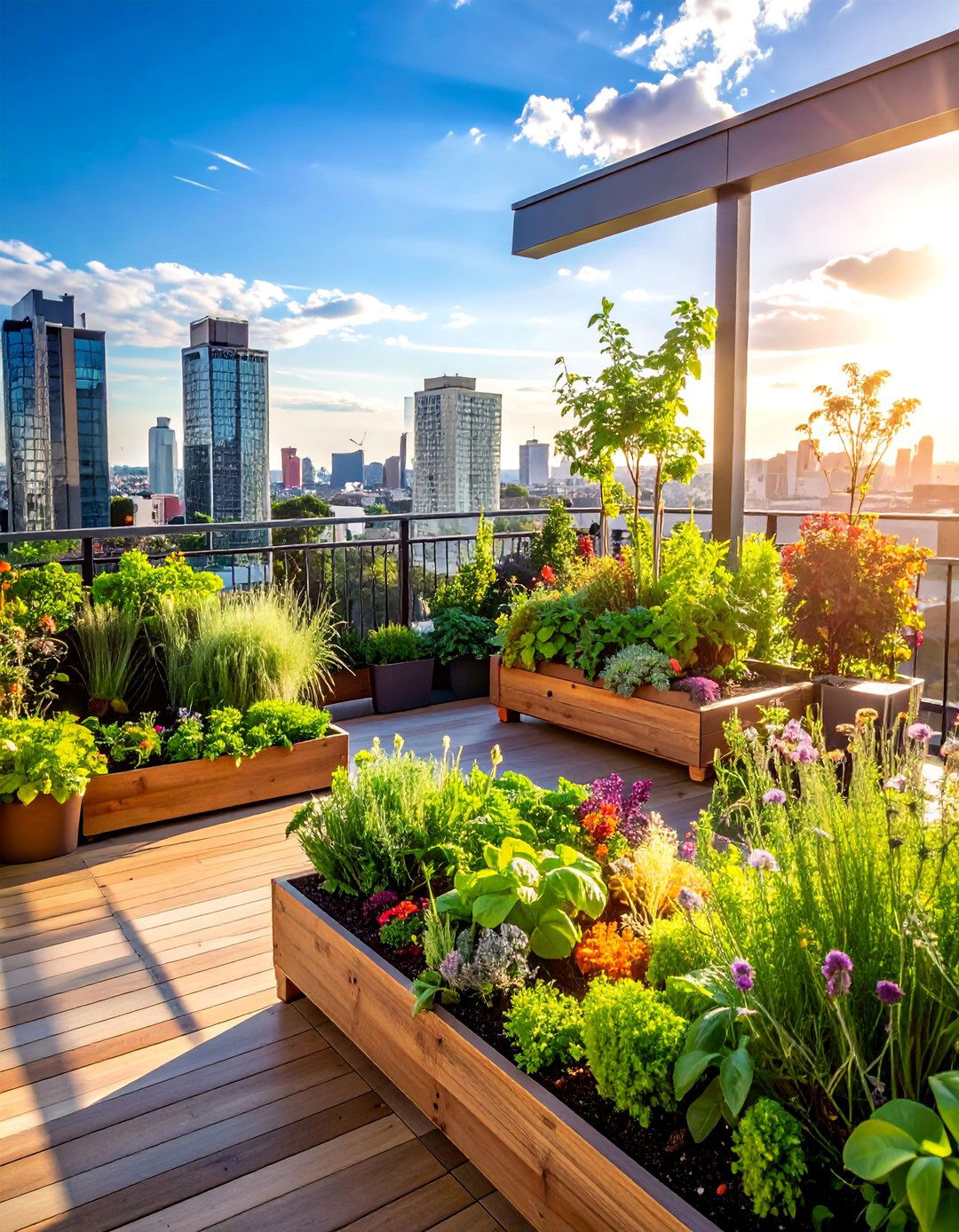
Adapt small backyard design principles for elevated outdoor spaces like rooftops, decks, and balconies that require special considerations for weight, wind, and exposure while maximizing limited square footage. Choose lightweight containers and soil mixes designed for container gardening, and select plants that can handle increased wind exposure and temperature fluctuations. Create windbreaks using trellises or screens to protect plants and create more comfortable seating areas. Consider weight limitations when planning water features or large plants, and ensure proper drainage to avoid water damage to structures below. Use vertical growing techniques extensively, and choose furniture that serves multiple purposes. These elevated gardens can provide exceptional views and unique growing conditions when properly planned.
33. Mediterranean Style Gardens
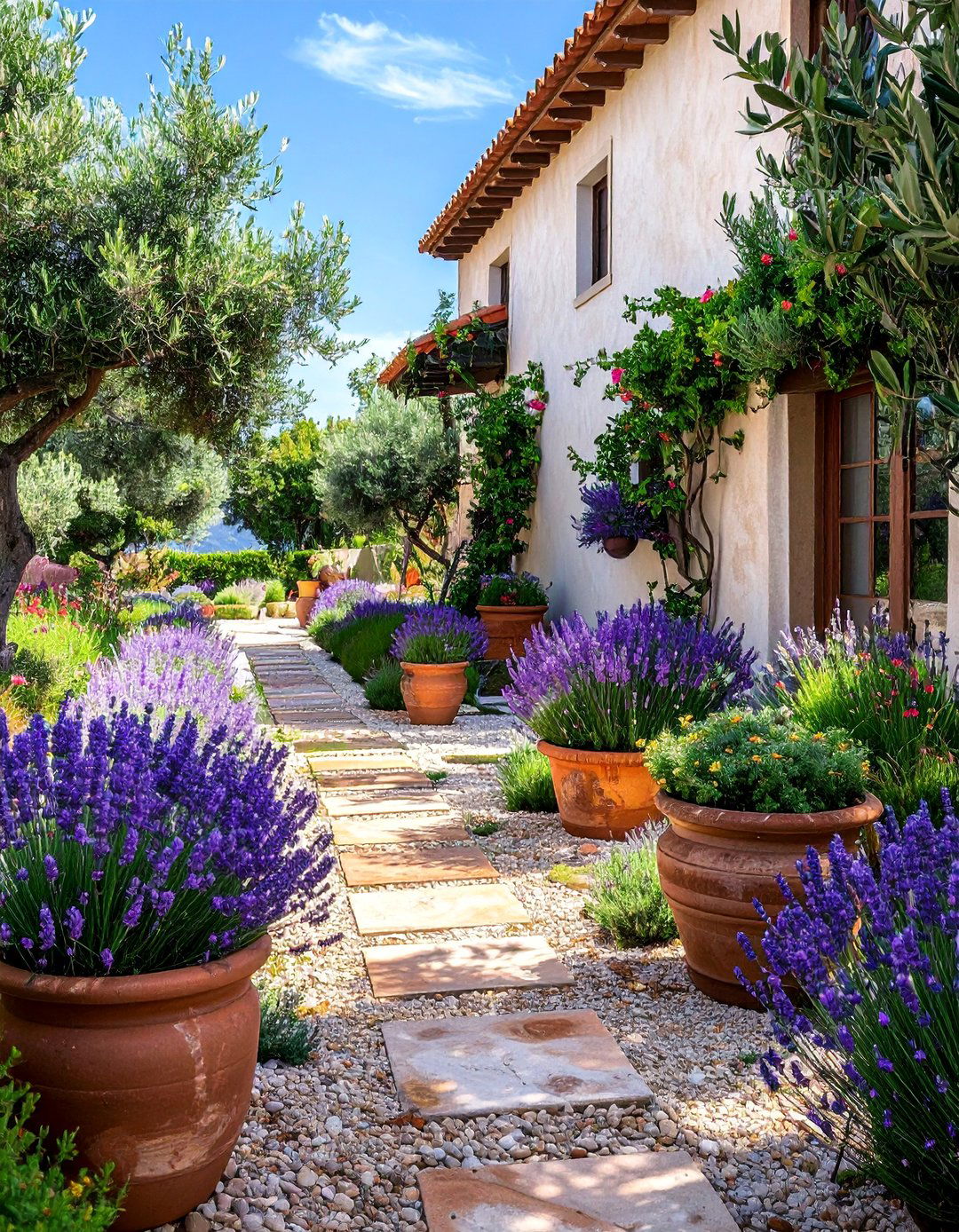
Create a relaxed, drought-tolerant landscape inspired by Mediterranean coastal regions using plants and materials that thrive in sunny, dry conditions while providing year-round beauty and fragrance. Include classic Mediterranean plants like lavender, rosemary, olive trees, and ornamental grasses that require minimal water once established. Use natural materials like terra cotta containers, stone pathways, and gravel mulches that complement the informal, weathered aesthetic. Add a small fountain or water feature for the sound of water, and include seating areas where you can enjoy the fragrant plants and relaxed atmosphere. Choose a color palette of blues, whites, and earth tones that evokes coastal Mediterranean villages. This style works particularly well in hot, dry climates and creates low-maintenance gardens with high visual impact.
34. Modern Minimalist Designs
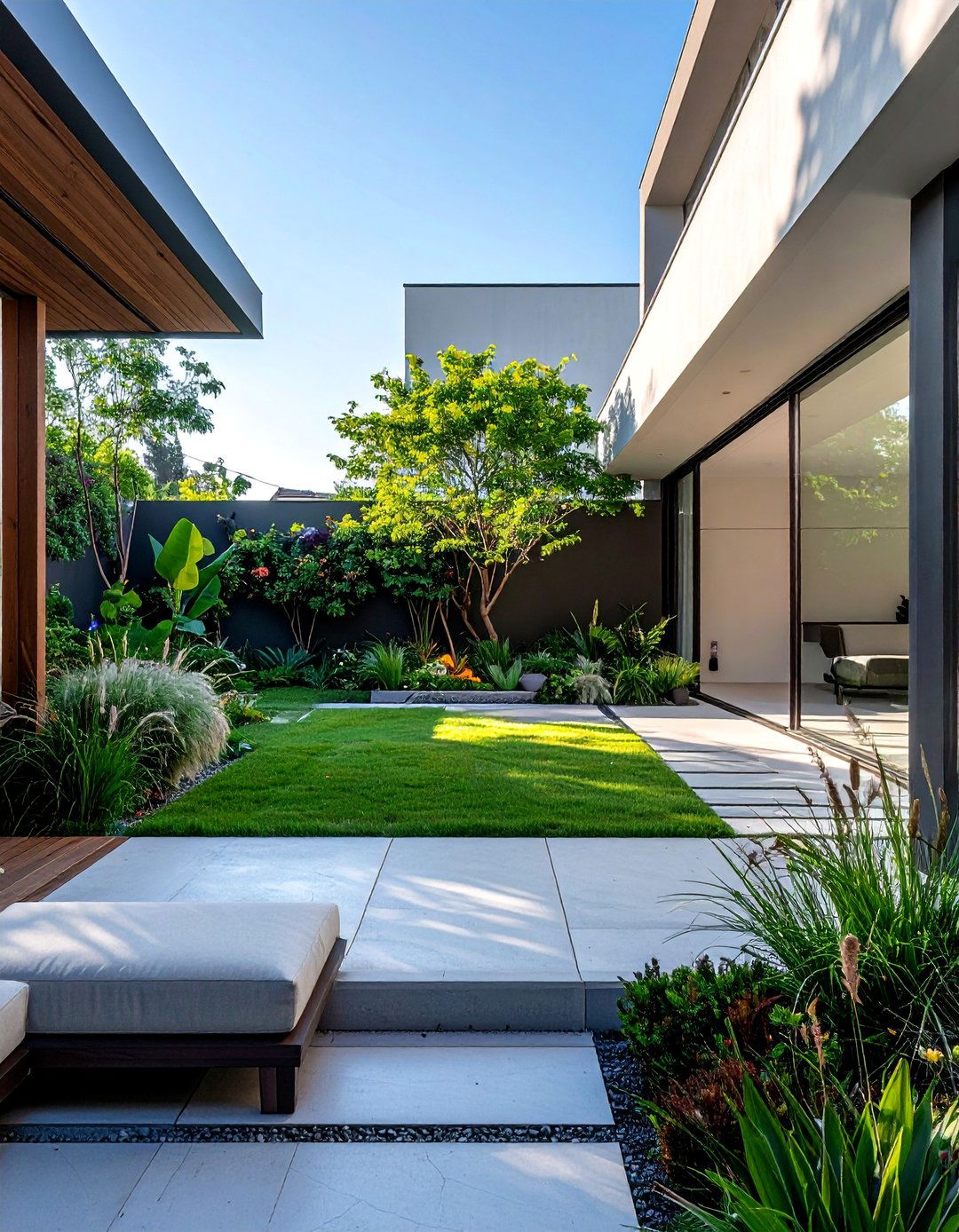
Embrace clean lines, simple plant palettes, and architectural elements to create sophisticated small backyard designs that feel calm, uncluttered, and larger than their actual size. Choose a limited number of plant varieties and repeat them throughout the space for unity and impact rather than using many different species. Use hardscaping materials like concrete, steel, and composite decking in neutral colors that complement your home's architecture. Include carefully chosen focal points like sculptural plants, water features, or art pieces rather than cluttering the space with numerous small elements. Maintain precise edges and geometric shapes in both planted and paved areas. This approach creates timeless designs that photograph beautifully and require less maintenance than more complex plantings.
35. Four Season Room Extensions
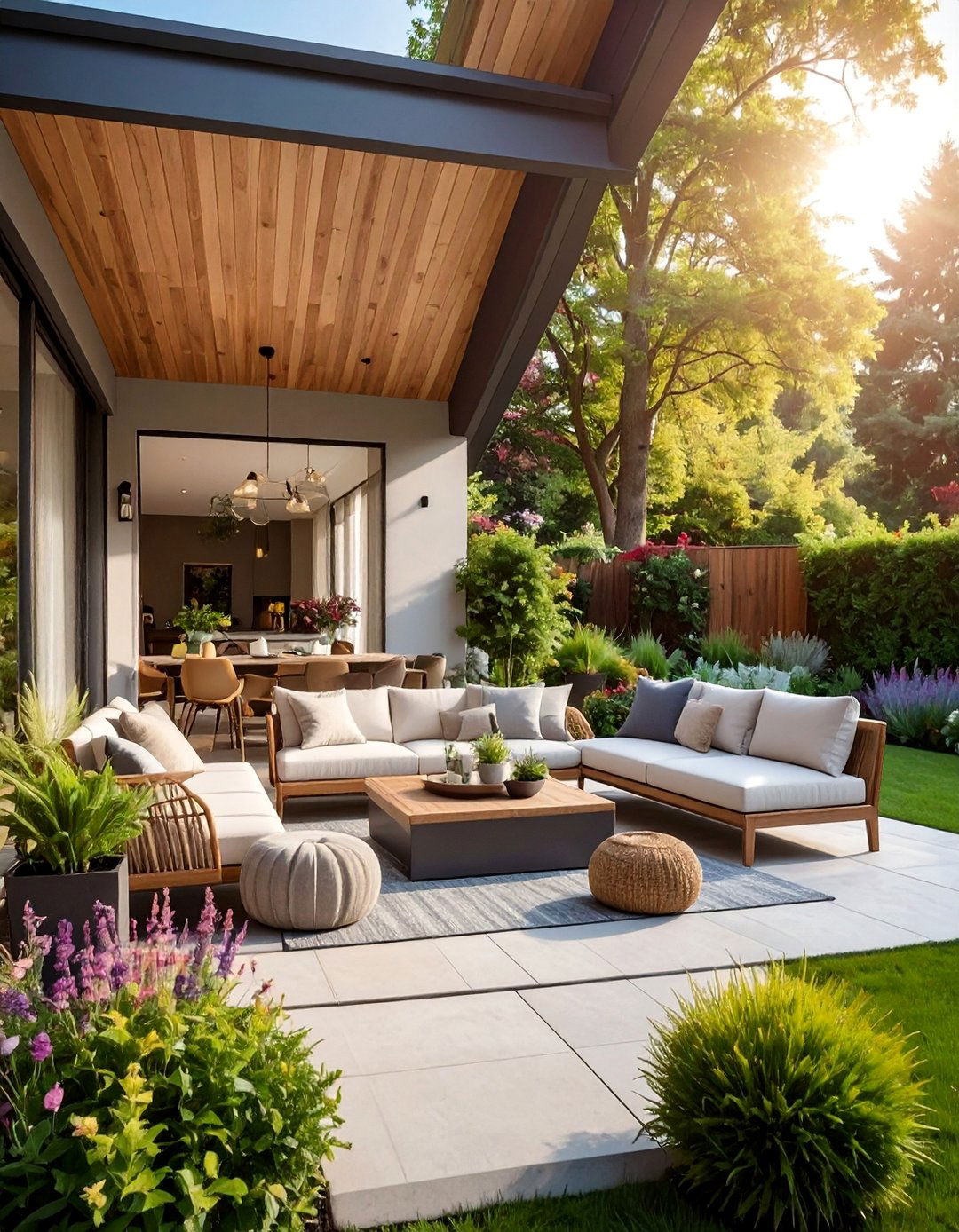
Design your small backyard to function as an extension of your indoor living space throughout all four seasons by including features that make it comfortable and usable regardless of weather conditions. Add heating elements like fire pits or patio heaters for cold weather, and cooling features like misters or fans for hot summer days. Include all-weather furniture and storage solutions that don't require constant moving and covering. Plan plantings that provide interest and beauty in every season, and add lighting that makes the space inviting after dark. Consider adding a pergola or gazebo that provides some weather protection while maintaining the outdoor feeling. This approach maximizes your investment in outdoor living and provides additional usable space for your home year-round.
36. Artistic Garden Features
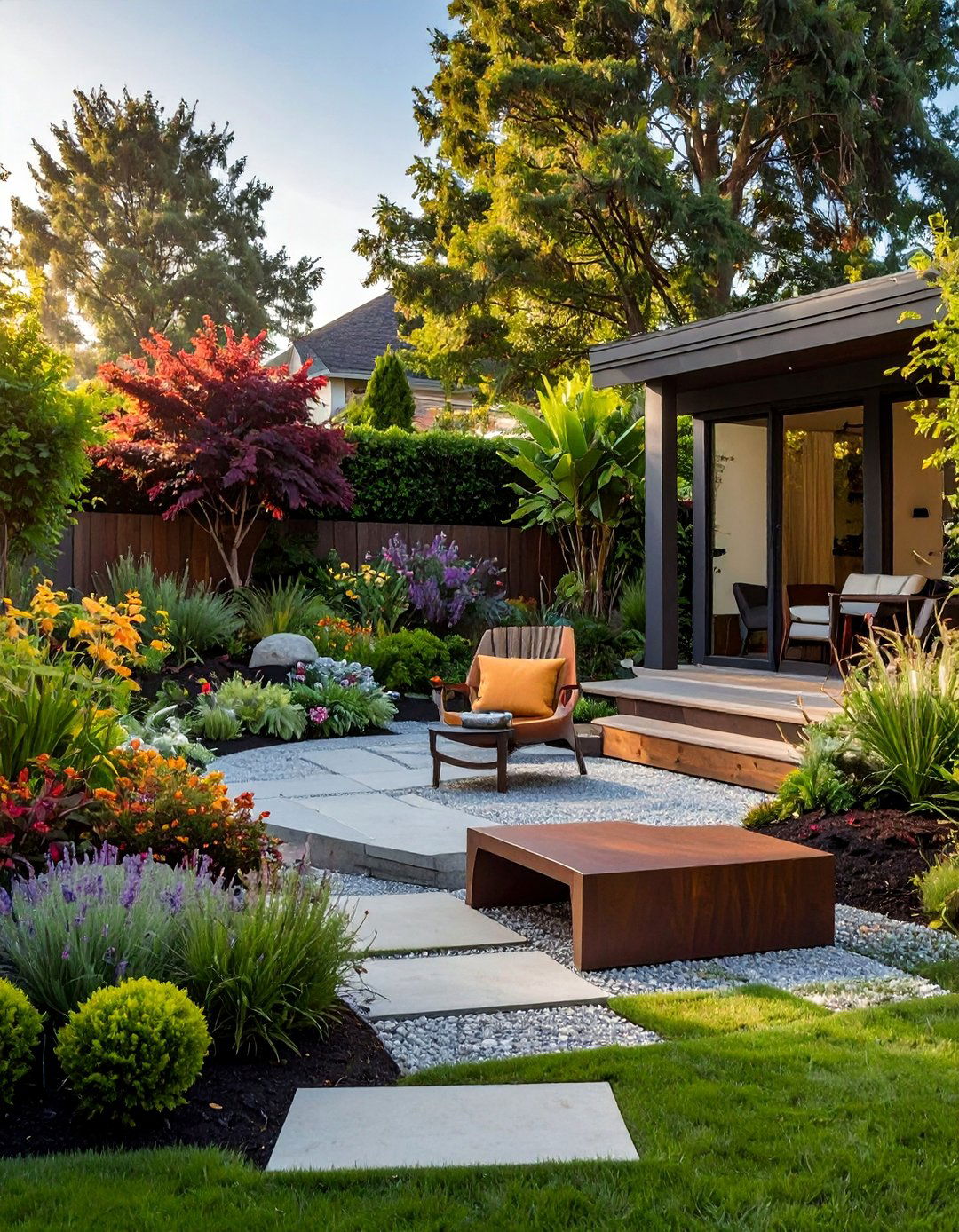
Incorporate sculptural elements, art installations, and creative focal points that reflect your personal style while adding visual interest and conversation starters to your small backyard space. Choose art pieces that complement your garden's scale and style - large dramatic pieces for modern spaces, or smaller whimsical elements for cottage gardens. Create DIY art projects like mosaic stepping stones, painted murals on fence panels, or sculptural plant supports that add personality without requiring large budgets. Use lighting to highlight art pieces after dark, and position seating where you can enjoy viewing your garden art. Consider art that changes with the seasons or weather, like wind sculptures or pieces that patina over time. This personal touch makes your garden unique and reflects your individual taste and creativity.
37. Sensory Garden Experiences
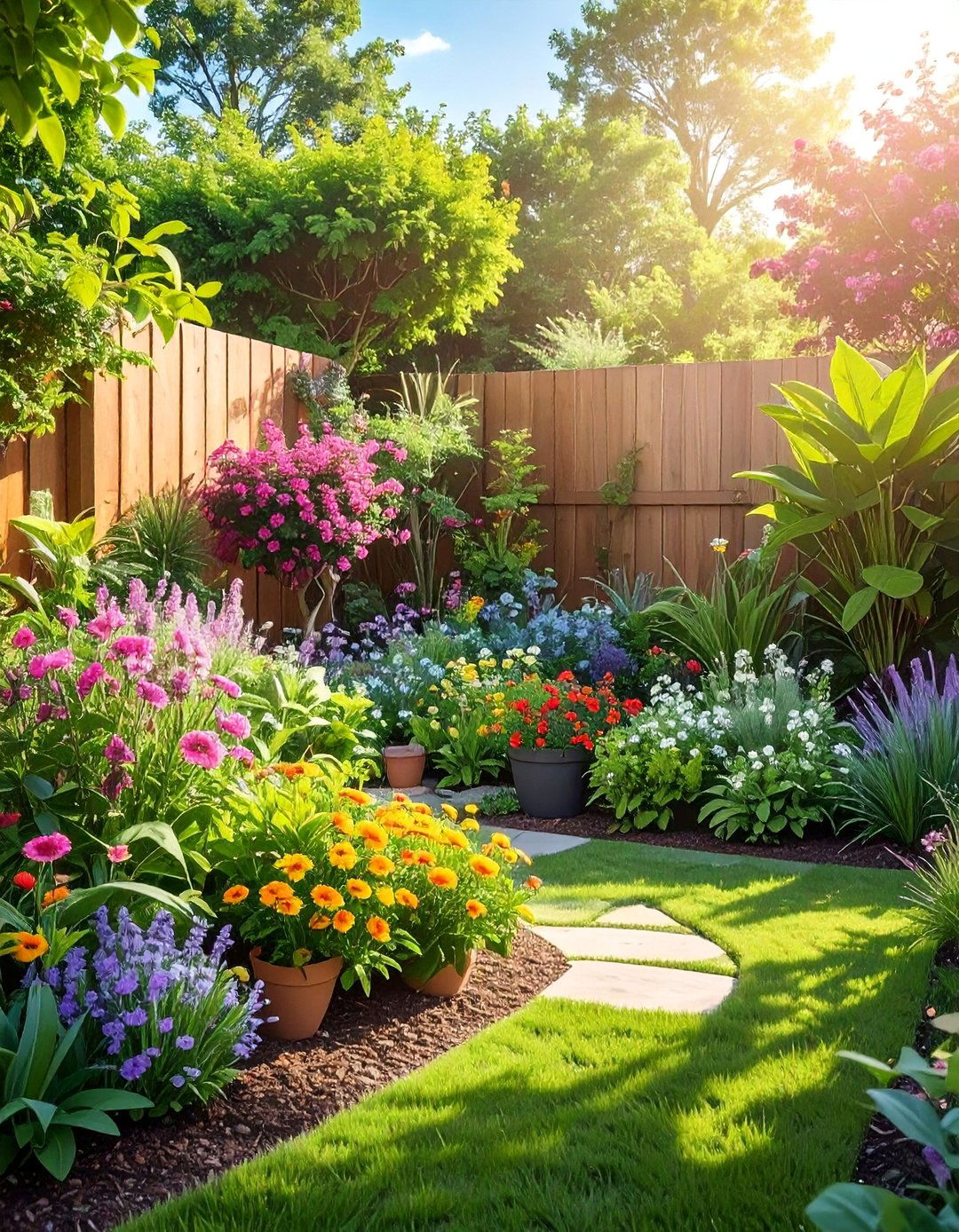
Design plantings and features that engage all five senses, creating rich, immersive outdoor experiences that are particularly valuable in small spaces where every element should contribute to overall enjoyment. Include fragrant plants like jasmine, roses, and herbs that provide beautiful scents throughout the growing season. Add plants with interesting textures like lamb's ear, ornamental grasses, and succulents that invite touching. Include wind chimes, water features, or rustling grasses for pleasant sounds, and choose plants with berries or edible flowers for taste experiences. Plan for visual interest with varied colors, forms, and seasonal changes. This multi-sensory approach creates gardens that are more memorable and engaging than those that rely on visual appeal alone.
38. Sustainable Garden Practices
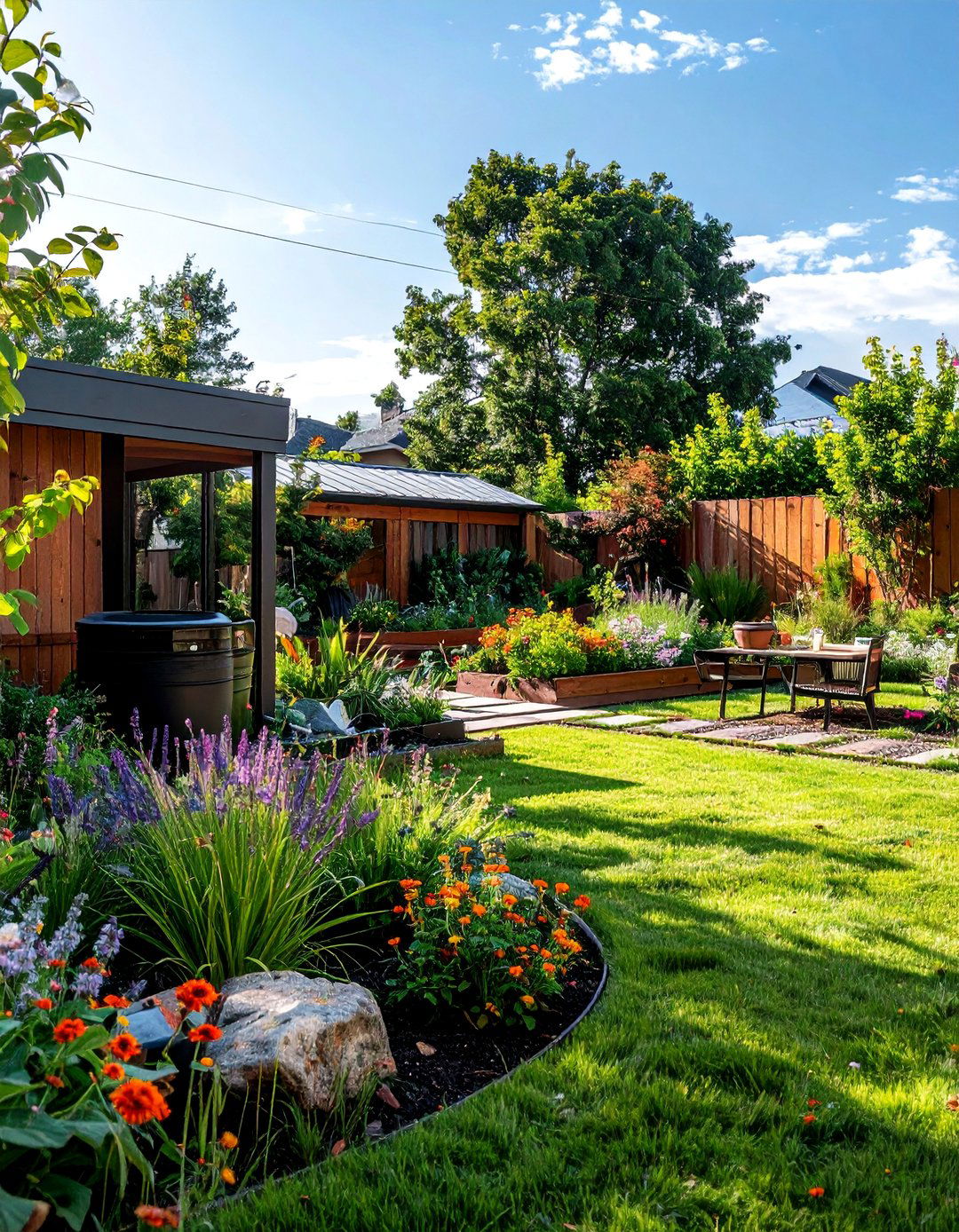
Implement environmentally responsible gardening techniques that reduce resource consumption while creating beautiful, healthy outdoor spaces that support local ecosystems and wildlife. Use native plants that require less water and maintenance while providing food and habitat for local birds and beneficial insects. Install rain collection systems, choose permeable paving materials that allow water infiltration, and compost organic waste to create nutrient-rich soil amendments. Avoid chemical pesticides and fertilizers in favor of organic alternatives and integrated pest management techniques. Choose locally-sourced materials when possible, and select plants that are well-suited to your climate to reduce resource inputs. These practices create gardens that are better for the environment while often requiring less maintenance and expense over time.
39. Multi-Functional Furniture Zones
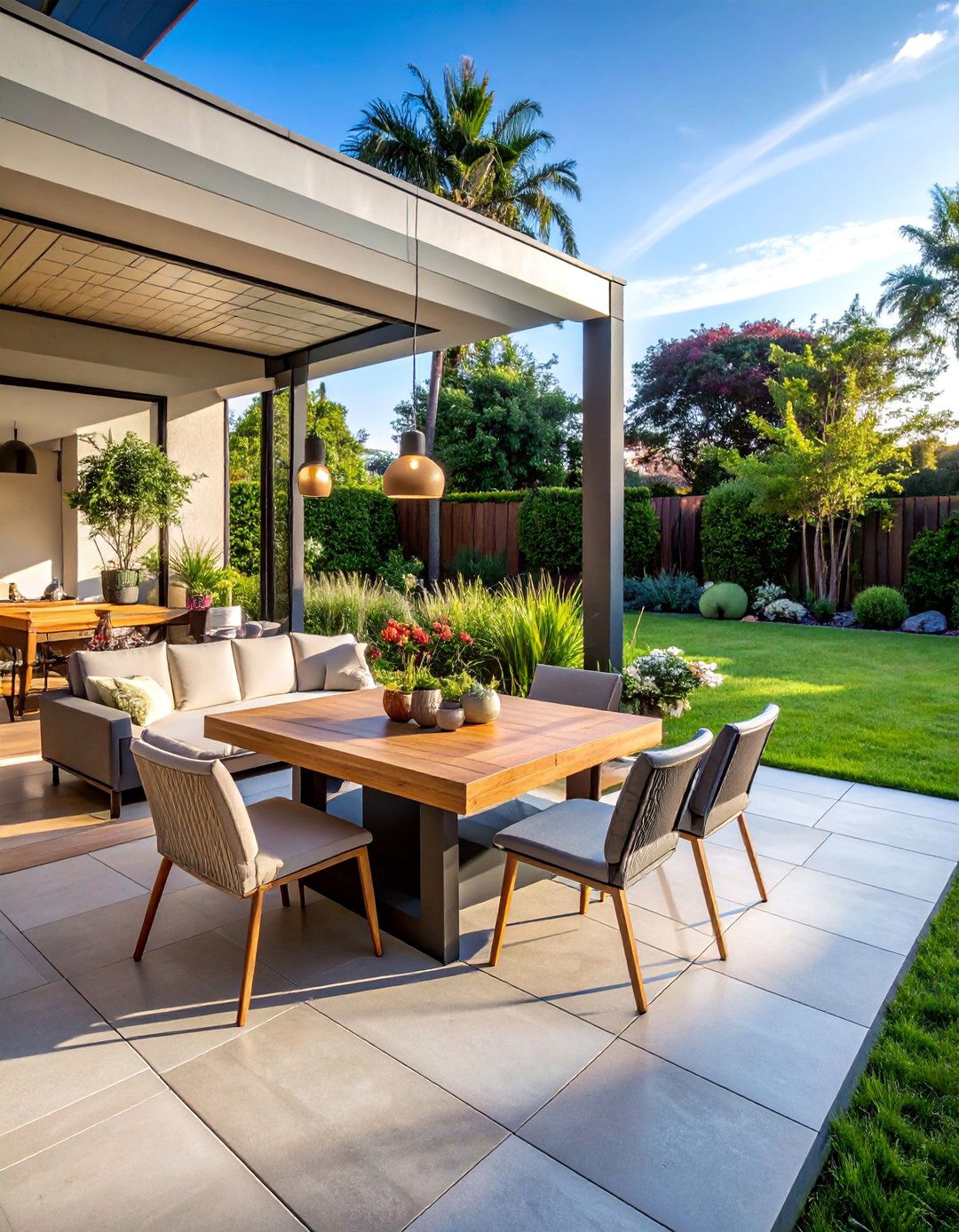
Maximize utility in small backyards by choosing furniture and fixtures that serve multiple purposes, reducing clutter while increasing functionality and flexibility for different activities and seasons. Select dining tables that convert to game tables, storage benches that provide seating, and fire tables that offer warmth plus surface space for drinks and snacks. Choose modular seating that can be rearranged for different group sizes and activities, and look for pieces that stack or fold for easy storage when not needed. Include furniture with built-in planters, lighting, or storage to maximize every piece's contribution to your outdoor space. This approach allows small areas to host different activities without feeling cramped or cluttered with specialized equipment.
40. Natural Swimming Pool Areas
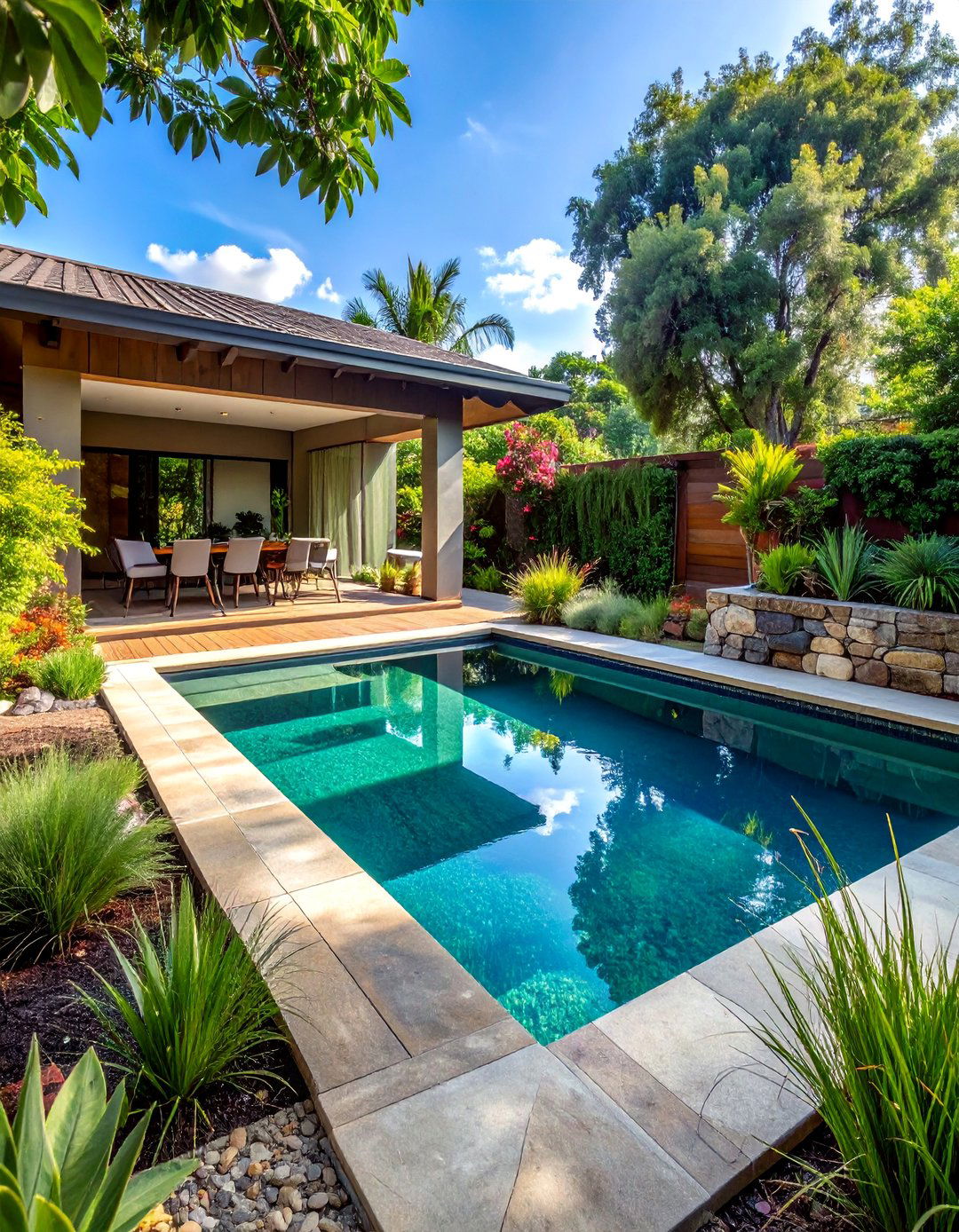
Create a refreshing water feature that combines the benefits of a swimming pool with the beauty of a natural pond using plants and biological filtration systems that maintain water quality without harsh chemicals. Design natural swimming pools with separate swimming and biological filtration zones, using aquatic plants to clean and purify the water naturally. Include features like gravel beds, waterfalls, and planted margins that support the biological system while creating beautiful, natural-looking water features. Choose materials like natural stone and native plants that blend seamlessly with your landscape design. Even small natural pools can provide cooling relief and habitat for wildlife while creating stunning focal points that feel more like natural ponds than traditional pools.
Conclusion:
Creating a beautiful, functional small backyard requires thoughtful planning, creative problem-solving, and a willingness to think beyond traditional landscape limitations. The forty ideas presented here demonstrate that size doesn't determine a space's potential for beauty, utility, or enjoyment. Whether you're drawn to productive gardens that provide food and habitat, relaxing retreats that offer peaceful escapes, or entertaining spaces that bring family and friends together, small backyards can deliver all these experiences and more. The key lies in choosing elements that serve multiple purposes, maximizing vertical space, and creating designs that reflect your personal style and needs. Remember that the best outdoor spaces evolve over time, allowing you to experiment, learn, and adapt your design as your interests and circumstances change. Start with one or two ideas that excite you most, and gradually build your perfect small backyard oasis.

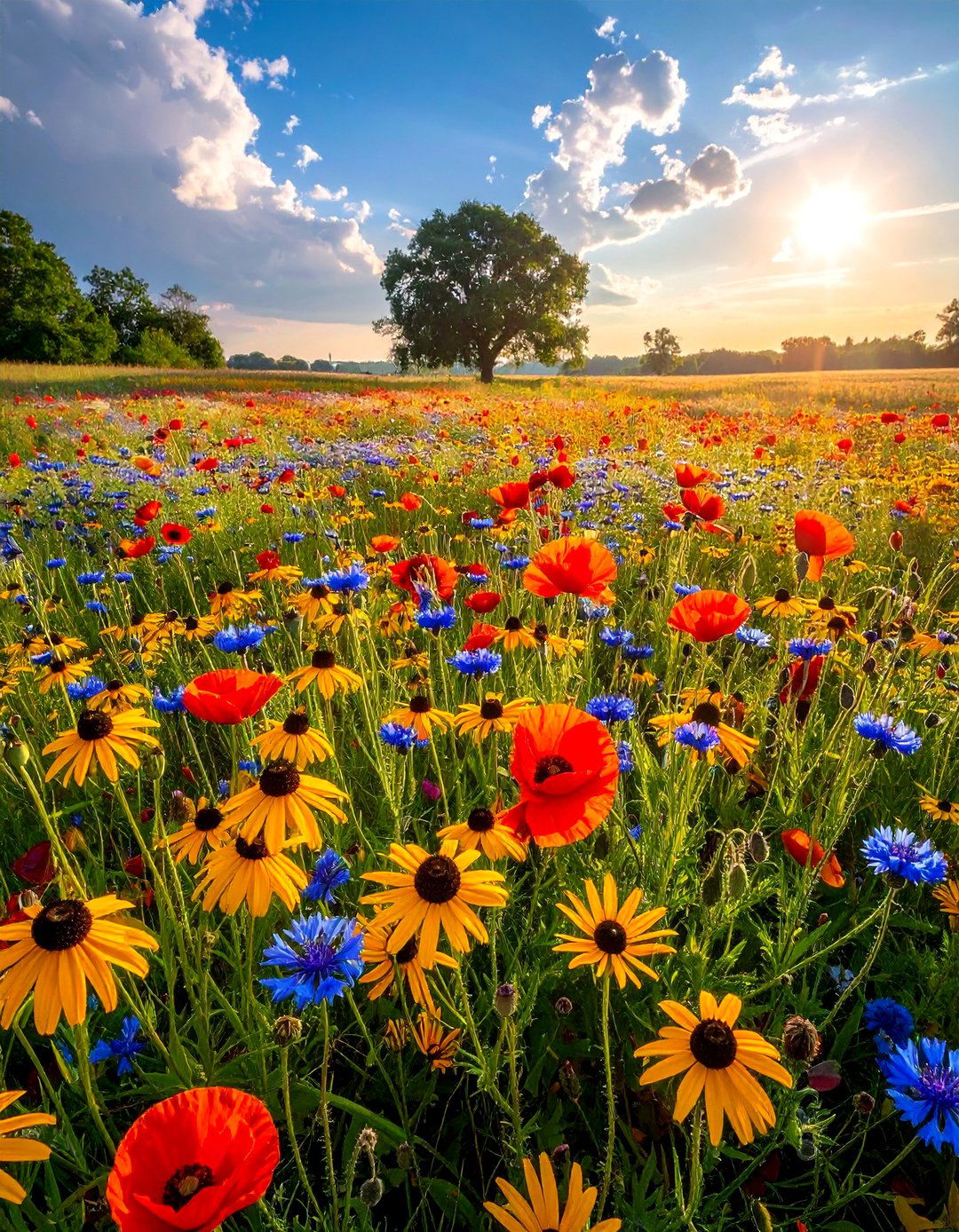
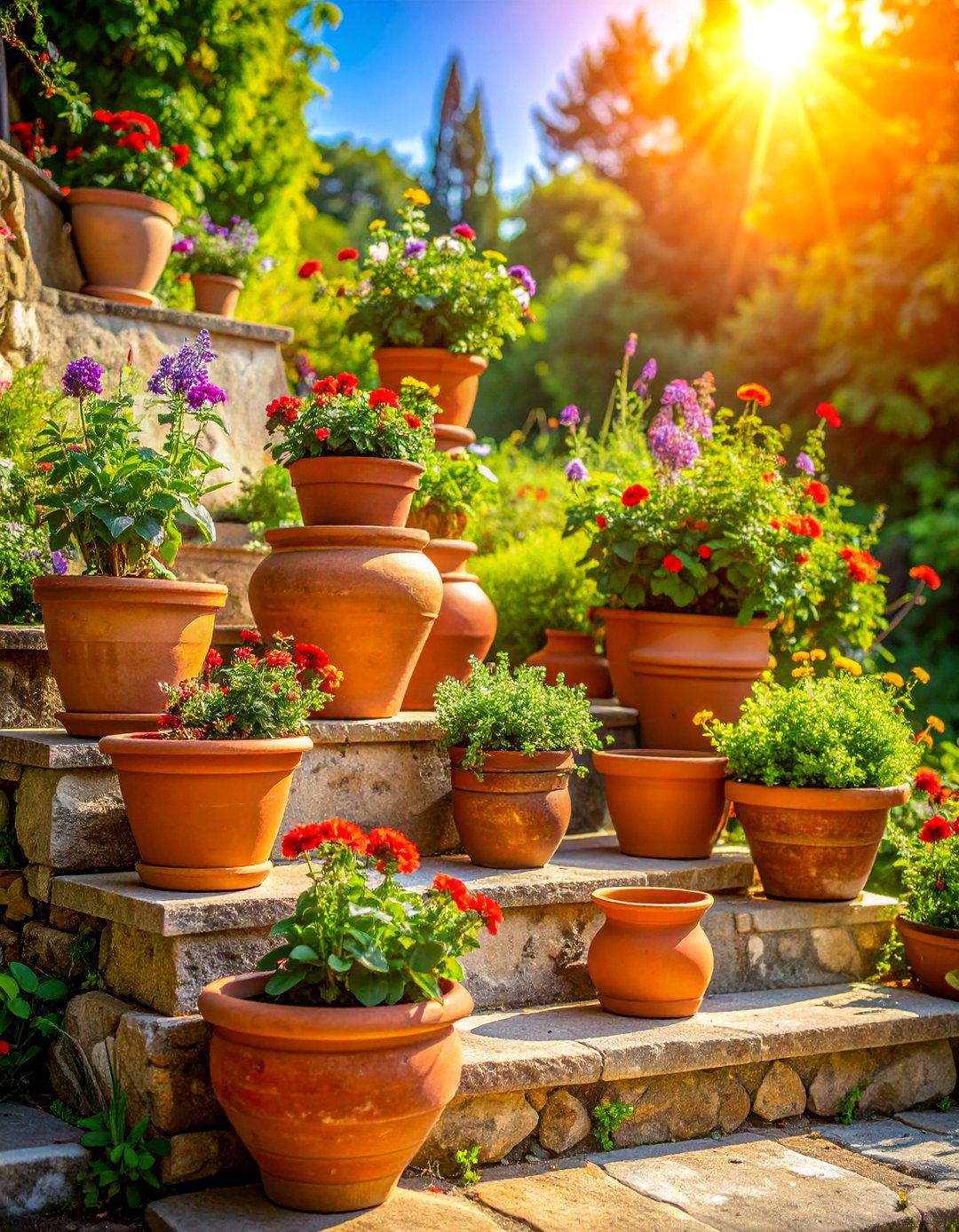
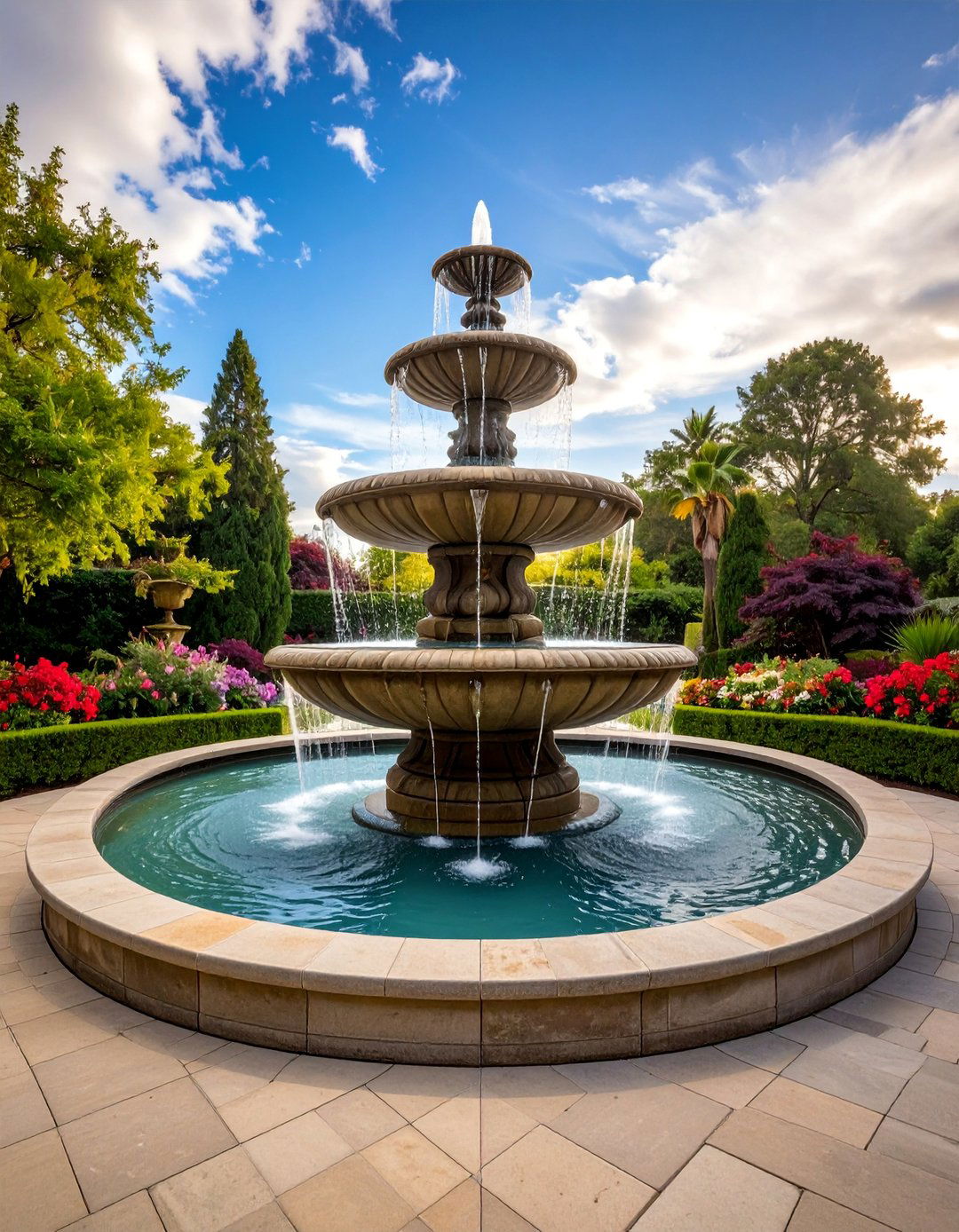
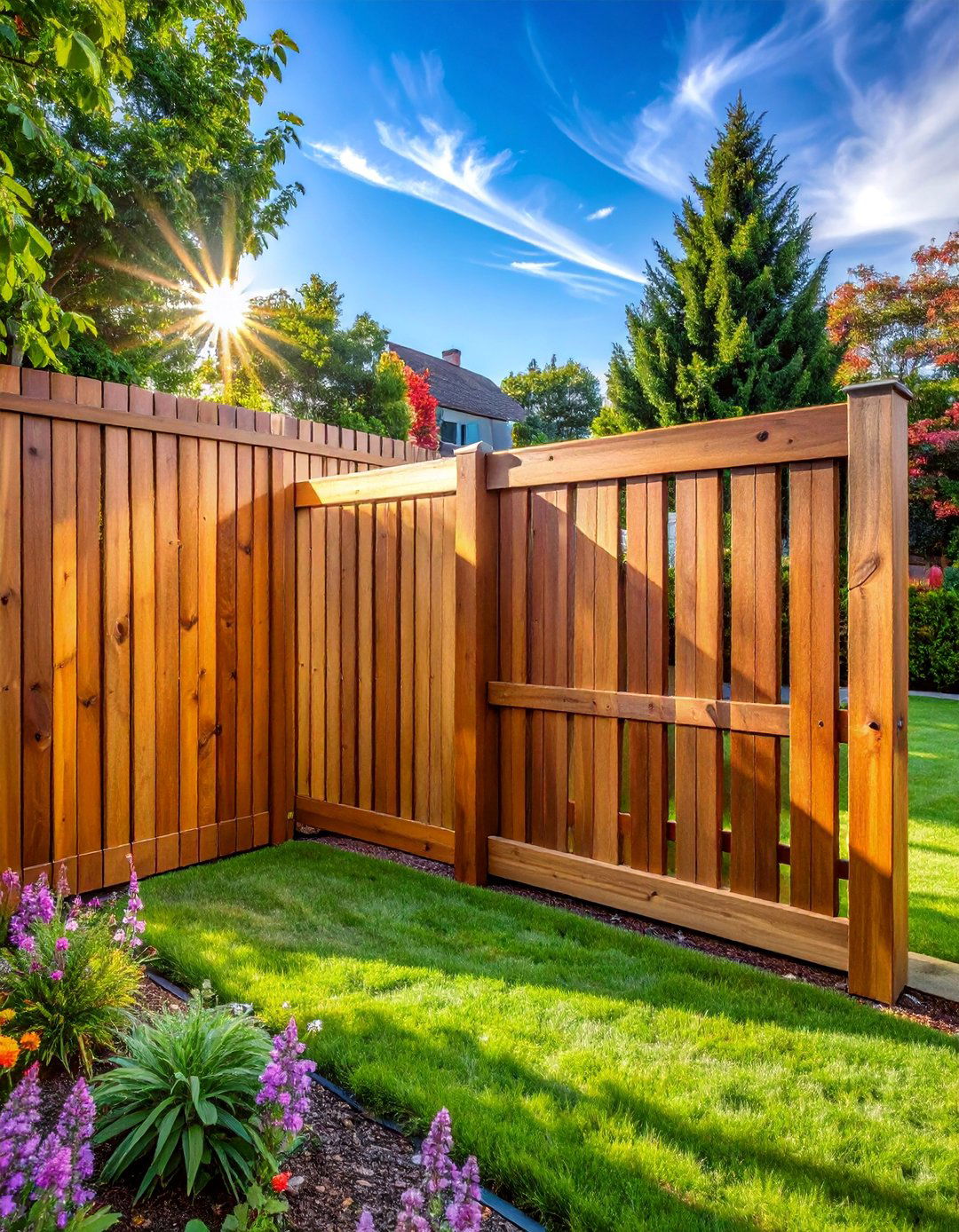
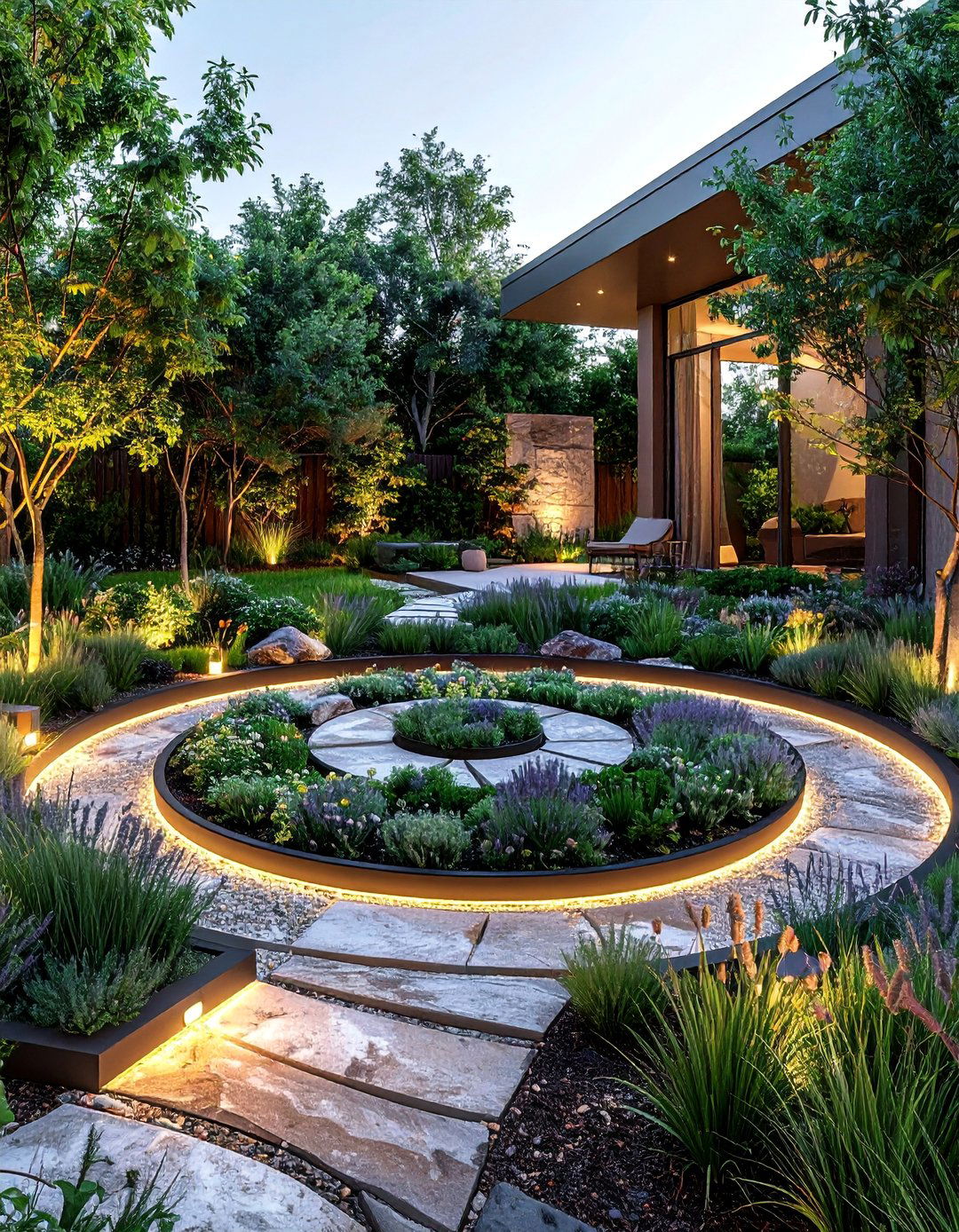
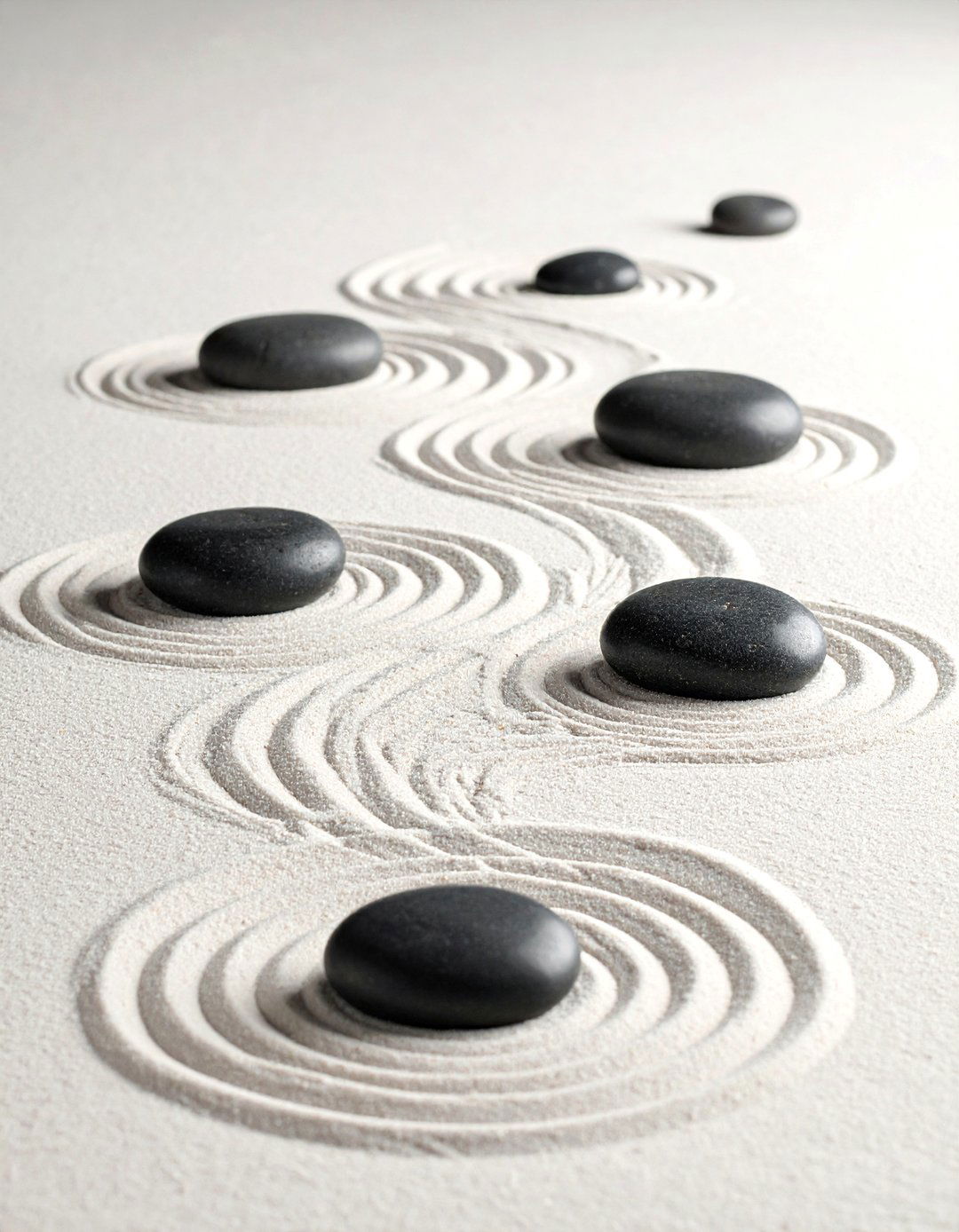
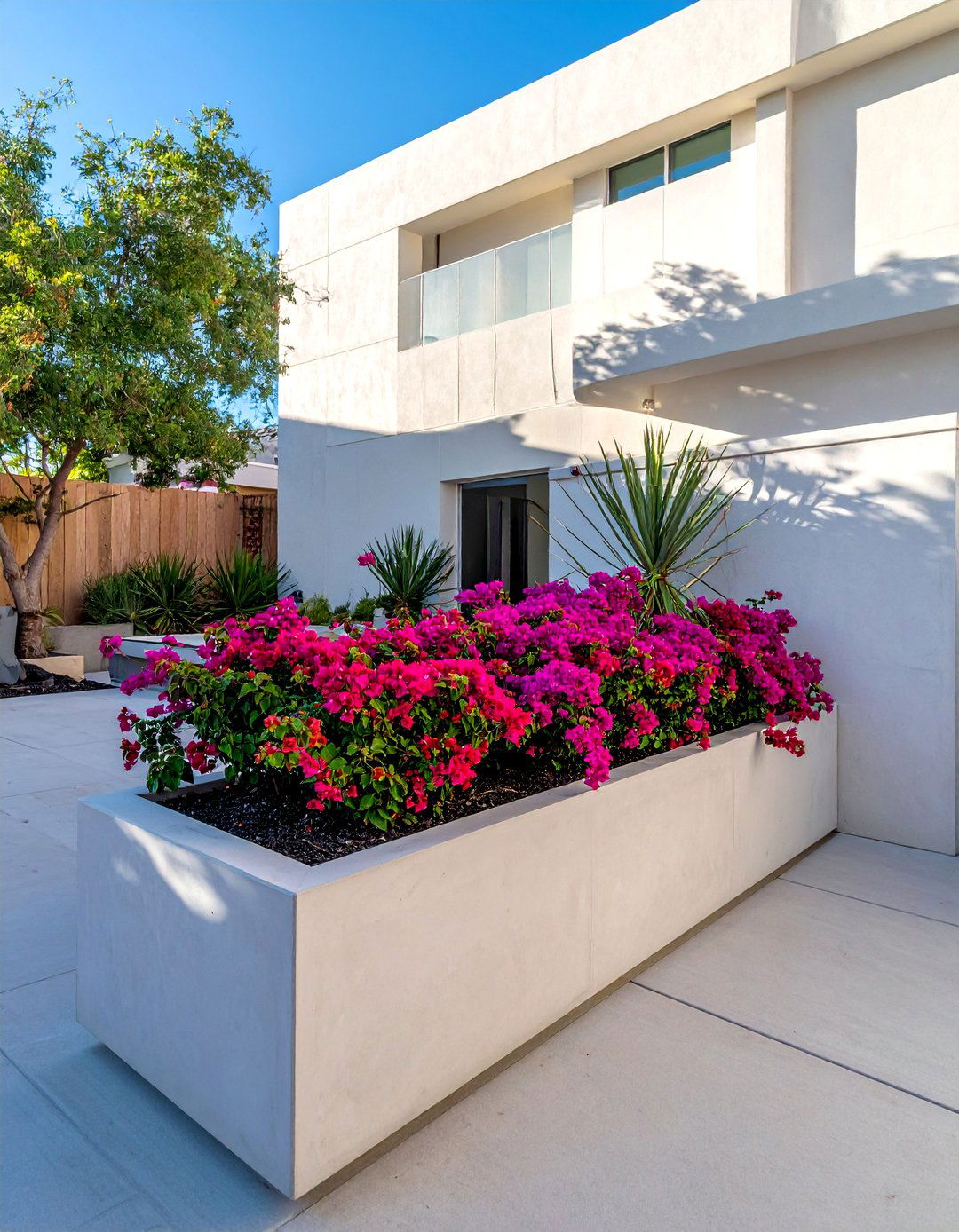
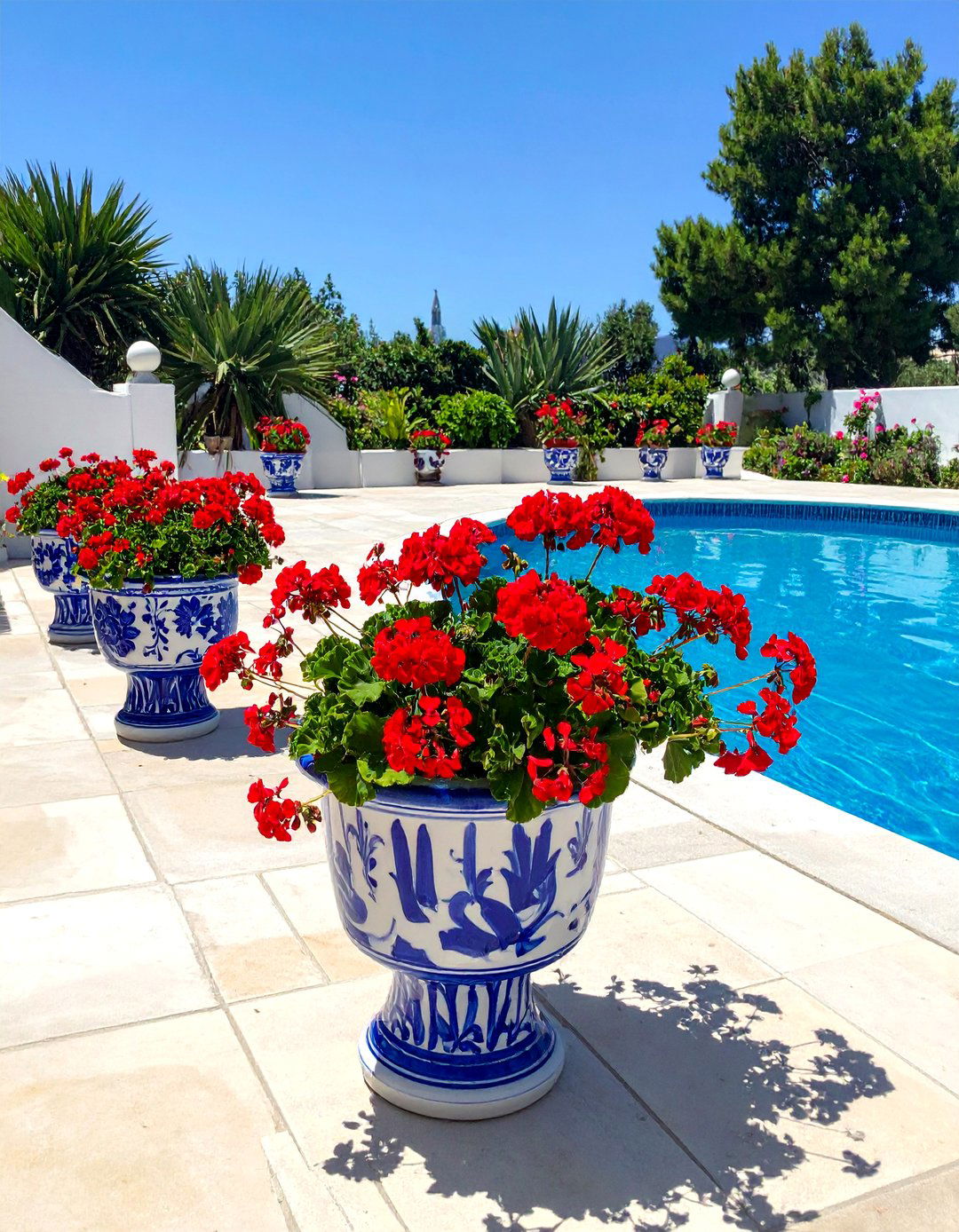
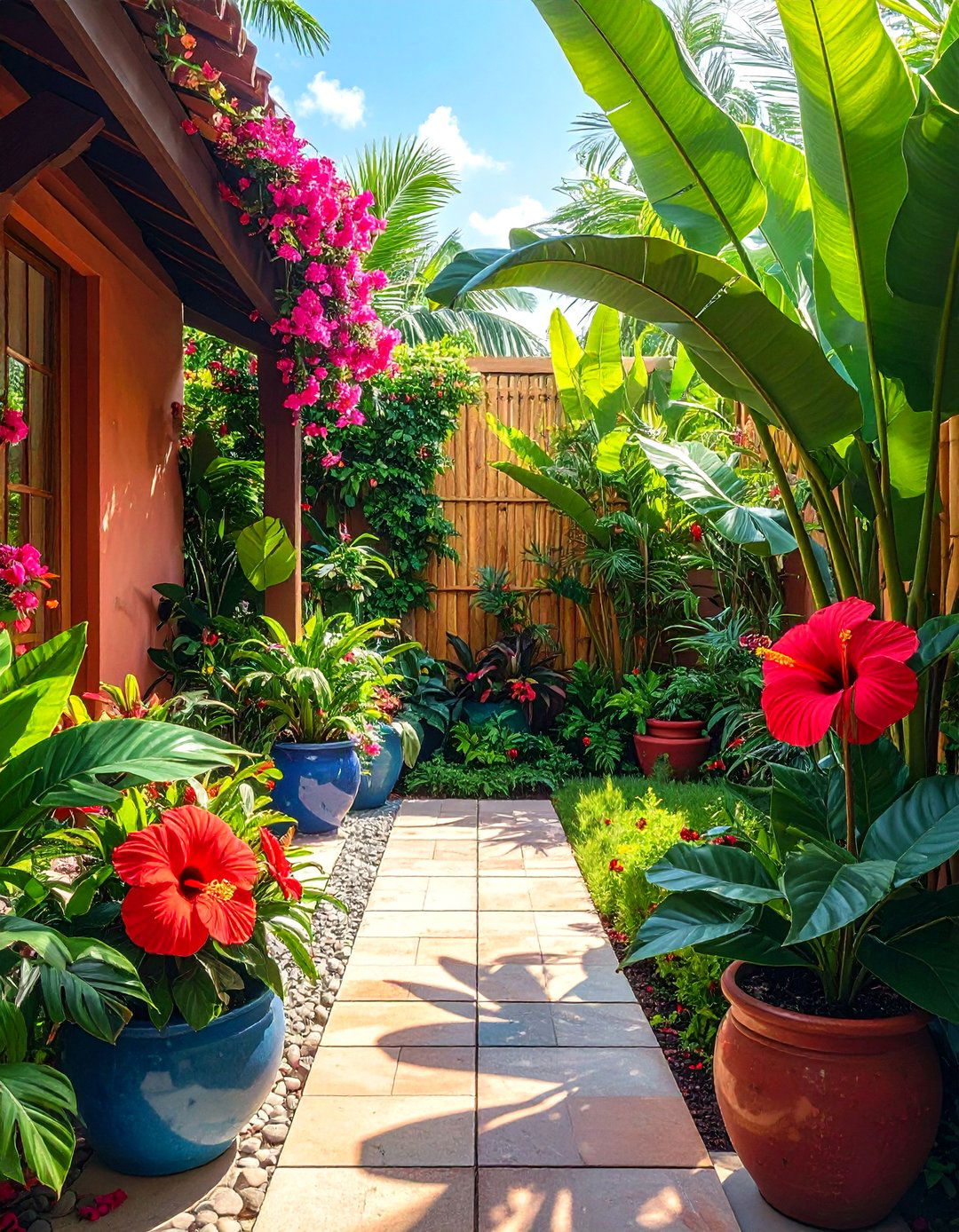
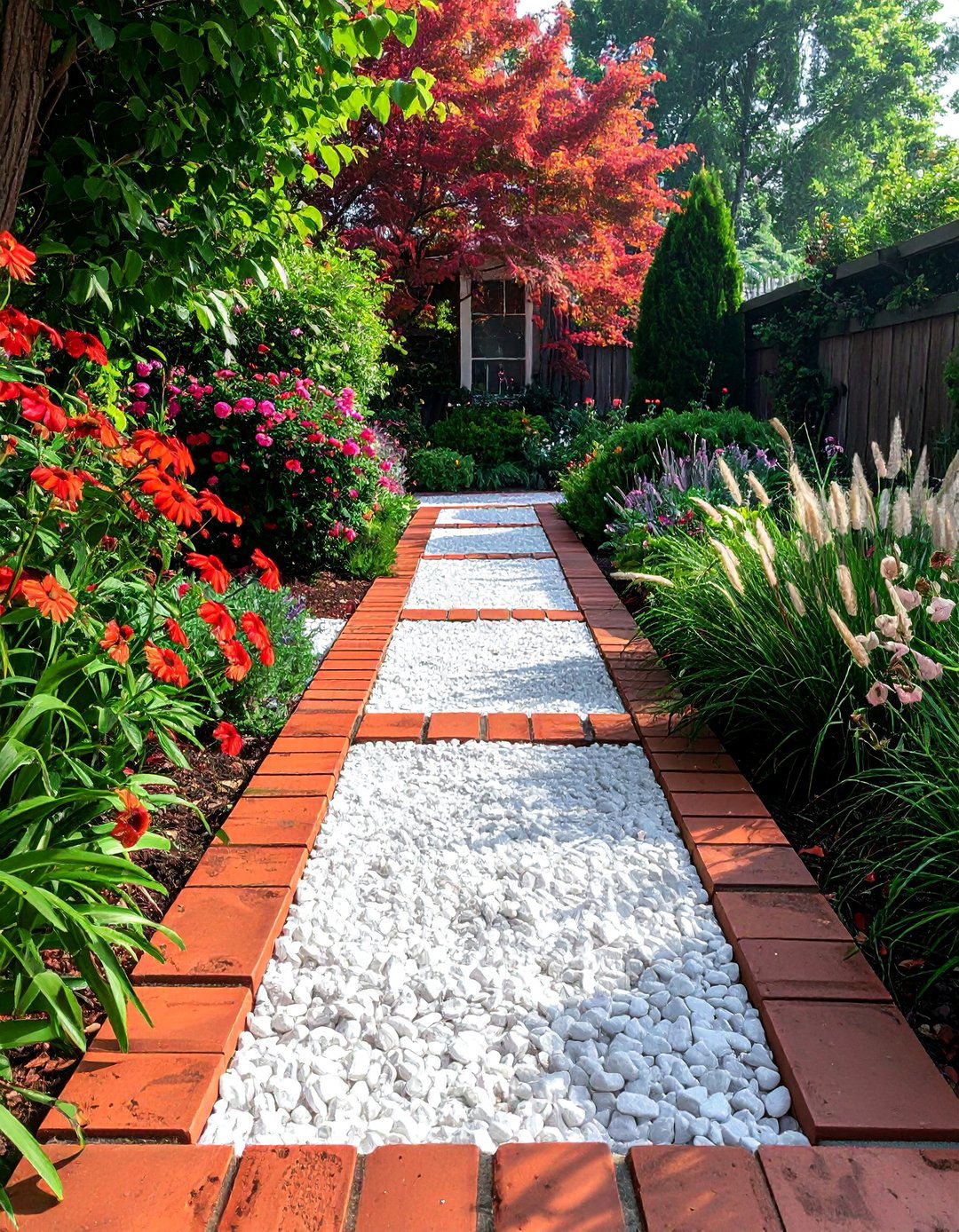
Leave a Reply